Sites: news | india | latam | brasil | indonesia
Feeds: news | india | latam | brasil | indonesia
topic: Freshwater Animals
Social media activity version | Lean version
Indonesian court jails environmentalist for flagging illegal farms in marine park
- An Indonesian court has sentenced an environmental activist to seven months in jail for a Facebook post in which he criticized the growing problem of illegal shrimp farms operating inside a marine park.
- The court found that Daniel Frits Maurits Tangkilisan had “created unrest” because of his post, under a controversial 2008 law on online speech that’s been widely used to silence environmental and human rights activists.
- Three other activists face similar charges in the case, which centers on their efforts to highlight the presence of illegal shrimp farms inside Karimunjawa National Park, which is supposed to be a protected area.
- Fellow rights activists have lambasted the ruling against Daniel, saying it sets a dangerous precedent for exploitation of the justice system to silence and criminalize individuals.
Indonesian activists face jail over FB posts flagging damage to marine park
- Four environmental activists in Indonesia face up to 10 months in jail for “hate speech” after complaining online about the proliferation of illegal shrimp farms inside a marine park.
- Karimunjawa National Park, which is supposed to be a protected area, has seen the number of such farms inside its borders proliferate in recent years, which groups like Greenpeace have linked to ecosystem degradation.
- Daniel Frits Maurits Tangkilisan is the first of the four members of the #SaveKarimunjawa movement to go to court; a verdict in his case is expected on April 4.
- All four men have been charged under a controversial 2008 law on online speech, which critics say has been abused vigorously by the Indonesian state to stifle dissent and opposition.
Nepal’s release of endangered crocs into historical habitat raises concerns
- Nepal recently released 25 critically endangered gharials into a tributary of the Mahakali River to reintroduce them to historical habitats, but concerns have arisen over transparency and timing of the process.
- Gharials are released into the Chaudhar river, part of the Terai Arc Landscape, to augment dwindling populations, although previous translocations have yielded mixed results.
- Researchers highlight challenges faced by gharials, including migration obstacles due to dams and barrages, and they advocate for better timing of releases to optimize adaptation and survival.
- Issues such as lack of publicized government studies, potential influence of reciprocal gifts in translocation decisions and denial of budget-related motives are raised amid efforts to conserve gharials.
Irrawaddy dolphin death in Thailand’s Songkhla Lake underscores conservation needs
- As few as 14 critically endangered Irrawaddy dolphins remain in the world’s smallest freshwater population of the species, in southern Thailand’s Songkhla Lake.
- The recent death of one of the remaining few raised the alarm among cetacean specialists, who say more must be done to save the imperiled population.
- Teetering on the brink of extinction, the dolphins face a slew of threats from entanglement in fishing nets, depletion of fish populations, and deteriorating lake conditions due to increasing pressures from agriculture, industry and infrastructure development.
- Experts say a “once-in-a-lifetime” opportunity to reverse the dolphin’s trajectory of decline is on the horizon in the form of major funding for dolphin conservation linked to a road bridge megaproject, but they warn it will only be successful if government agencies can put aside their competing agendas.
Migratory Amazonian catfish placed on the international protection list
- The gilded and piramutaba catfish (Brachyplatystoma rousseauxii and B. vaillantii, respectively) were recently placed on the Convention on the Conservation of Migratory Species (CMS) list, also known as the Bonn Convention.
- These fish carry out the longest freshwater migration on the planet: The gilded or “dorado” travels 11,000 kilometers (6,800 miles) between the mouth of the Amazon River and the foot of the Andes to lay its eggs; the piramutaba swims 5,500 km (3,400 mi).
- Both species are endangered due to overfishing and construction of hydroelectric plants on rivers in the Amazon; the dorado’s distribution range has shrunk by 37% because of the dams.
Nile Basin farmers grow food forests to restore wetlands and bring back a turtle
- Sugarcane is a widely grown crop in the Nile Basin, but its destructive effects on soils, water resources and biodiversity have become increasingly apparent.
- As the thirsty crop draws down water resources, aquatic species like the critically endangered Nubian flapshell turtle suffer a loss of habitat, forage and nesting sites.
- In an effort to revive soils, diversify diets and incomes, and boost water levels that many animals rely on, communities are implementing agroforestry projects in lieu of monocultures.
- The resulting “food forests” attract an array of wildlife while refilling wetlands and river systems where the culturally important flapshell turtles swim.
Gharial conservation plan leaves Nepal fishing communities searching for new jobs
- Since the creation of Chitwan National Park, some Indigenous Bote people who have lost access to their ancestral lands and livelihoods have been employed by the park as gharial keepers to help conserve the critically endangered species.
- However, community members say the park’s restrictions on their fishing livelihoods to protect the reptile species is taking a toll on their economic needs and restricting their rights; the possibility of working as gharial keepers and other livelihood alternatives are insufficient, they say.
- Many parents are now encouraging their children to migrate to Persian Gulf countries to work as migrant laborers in order to lead a better material life.
- Conservationists say restricting fishing is an important step in protecting the species, which would struggle to survive if many economically dependent communities fished in the rivers.
Indus River dolphins’ survival is our responsibility (commentary)
- Indus River dolphins are distinguished by their elongated noses and small, nearly vestigial eyes.
- Once thriving in the lower parts of the Indus and its tributaries, their numbers have dwindled due to various environmental stresses.
- “Their story is not just about their survival but also about our responsibility to safeguard our planet’s diverse and increasingly vulnerable wildlife for future generations,” a new op-ed argues.
- This post is a commentary. The views expressed are those of the author, not necessarily Mongabay.
Amazon catfish must be protected by the Convention on Migratory Species COP-14 (commentary)
- The latest Convention on Migratory Species of Wild Animals (also known as the Bonn Convention) meeting (COP-14) is taking place in Uzbekistan this month, and the government of Brazil has proposed protections for two catfish species with extraordinary migrations, the dorado and piramutaba (manitoa).
- The dorado’s migratory journey for instance spans a distance of 11,000+ kilometers round trip, from the Andes to the mouth of the Amazon River, and along the way it connects multiple ecosystems and feeds local and Indigenous fishing communities, but is under increasing threat.
- “During COP-14, the dorado and piramutaba will take a prominent place thanks to the Brazilian Government’s proposal to include them in CMS Appendix II…It is essential that the governments at the meeting adopt Brazil’s proposal,” a new op-ed argues.
- This article is a commentary. The views expressed are those of the author, not necessarily Mongabay.
Nepal’s gharial population rises, but threats to the crocs persist
- The population of critically endangered gharials in Chitwan National Park, Nepal’s stronghold for these crocodiles, increased by around 11% as of the start of 2024, totaling 265 individuals compared to 239 the previous year.
- While the increase is positive, a recently published study shows the critically endangered crocs are unevenly distributed throughout their range, with threats from fishing, changes in river flow, and infrastructure development deterring them from certain prime habitats.
- The study also flagged the low success rate of a raise-and-release program for captive-bred gharials: 404 gharials have been released under the program, but the overall population has increased by just 80.
- Juveniles released under the captive-breeding program are likely suffering high mortality rates in the wild or getting washed downstream to India; experts say a possible solution is to release them as far upstream as possible.
Camera-traps help identify conservation needs of Thailand’s coastal otters
- Otters are sometimes described as the “tigers of the mangrove” in Southeast Asia, where they’re well-known to display extraordinary resilience and adaptability to human activity and urbanization.
- A new camera-trap study now highlights the importance of expanses of natural habitat, such as coastal forests and wetlands, for two species of otter living along southern Thailand’s increasingly modified coasts.
- The research team found that while otters are able to live within human-modified landscapes, tracts of natural habitat offer them vital refugia from a slew of threats, such as road collisions, prey depletion due to pollution of watercourses, and conflict with fish and shrimp farmers.
- The authors used their findings to create maps that indicate where conservationists and wildlife departments should prioritize management and monitoring for these vital top wetland predators.
As Sri Lanka floods swell with climate change, so does human-crocodile conflict
- Sri Lanka is among the countries most vulnerable to climate change, with long drought spells, receiving intense rain during a shorter period with a marked increase in flood events.
- During flooding, crocodiles inhabiting rivers tend to reach land and move closer to human settlements, increasing the risk of encounters with people.
- The Nilwala River flows through southern Sri Lanka and recent flood events have increased croc encounters with humans in the Matara district and escalated threats to human safety, resulting in disaster management responses.
- During recent flooding events, no serious incidents linked to crocodiles were reported, but wildlife officials had to chase crocs away from riverbanks, highlighting the need for an immediate and durable solution for the human-crocodile conflict around the Nilwala River area.
Could mugger crocodiles be brought back from regional extinction in Bangladesh?
- Once, mugger crocodiles (Crocodylus palustris) were common in Bangladesh’s major rivers, including the Padma, Jamuna, Meghna and most of their tributaries, but the species is thought to have gone extinct in the country due to unchecked poaching for its prized skin.
- Although the IUCN in 2000 declared the mugger regionally extinct in Bangladesh, three adult muggers were recovered from the country’s river and water bodies in only 11 days, Oct. 17-28 this year.
- The crocodiles were taken to the Karamjol Crocodile Breeding Centre in Khulna, and authorities are working on how muggers could be brought back to nature by increasing their population through captive breeding.
- Experts suggest establishing a safe zone for the crocodiles in the upper Padma River.
Nepal’s water hyacinth helps exotic fish invade, harming native species: Study
- Exotic fish species such as Nile tilapia and glassfish were introduced by humans to Pokhara, Nepal’s Lake City for various reasons, and they compete with and prey on native fish species.
- A study suggests that water hyacinth, an invasive plant species, could be helping exotic fish species in Pokhara’s lakes to invade the lakes and reduce the diversity and abundance of native fish species.
- The researchers suggest that urgent conservation action is needed to control the spread of both water hyacinth and exotic fish species, and to protect the native fish species and the ecosystem of the lakes.
Fishing ban extension raises hopes for iconic Amazon pink river dolphin
- The Amazon river dolphin, or boto, is an integral feature of the rainforest’s biodiversity and culture, and is central to several Indigenous tales.
- Even though the dolphin isn’t fished for human consumption, it’s become endangered over the decades because fishers use its flesh as bait for catching piracatinga catfish.
- The Brazilian government earlier this year renewed a moratorium on fishing of piracatinga, first imposed in 2014, in the hope of saving the dolphin, but experts say fishers have just been ignoring the rule.
- The measure became even more relevant in October following the detection of more than 100 dead dolphins in an Amazon lake — experts suspect that the deaths are directly linked to the extreme drought affecting the region.
First otter sighting in Nepal’s Chitwan park in two decades raises questions
- A wildlife photographer snapped images of a smooth-coated otter in the Rapti River in Chitwan National Park, where the species hadn’t been recorded in more than two decades.
- The species is one of the three otter species believed to live in Nepal, all of which are threatened by habitat loss and river pollution caused by hydropower development, sand mining and agricultural runoff.
- Researchers have called for funding to install camera traps in the Rapti to monitor the presence of otters there.
NASA satellites reveal restoration power of beavers
- A new partnership between NASA and researchers is measuring the impact of beavers reintroduced to landscapes in Idaho.
- Beavers are one of the world’s most powerful ecosystem engineers, building new habitats by slowing water flow and reducing flooding, while also boosting biodiversity.
- Beavers are all the more important in an age of rapid climate change, as they produce wetter and more resilient habitats, even in the face of wildfires.
- “NASA is interested in how satellite Earth observations can be used for natural resource management,” a member of the space agency’s Ecological Conservation Program tells Mongabay.
How biological surveys prevent destructive dams in the Balkans
- Over 3,000 hydropower dams are proposed to be built in the next few years on Balkan rivers.
- A conservation research and advocacy project says this number is too high, due to such dams’ likely detrimental effects on fragile freshwater ecology, and argues that permits granted to hydropower companies do not take biological richness adequately into account.
- The Balkan country of Albania agreed with them recently, using the group’s data as part of its decision to cancel a giant dam project proposed for the Vjosa River, and instead named the area a national park.
- Mongabay visited the group’s latest biological survey of the Neretva River in Bosnia-Herzegovina and shares this new video report.
Popular aquarium fish from Thailand and Myanmar is new-to-science species
- Redtail garras, known for their bright orange tails and elongated snouts, are popular aquarium fish, but information about their biology has been scarce until recently — when they were described as a new species.
- Redtail garras primarily eat algae and arthropods by scraping them off rocks using specialized mouthparts. They have unique features like a snout covered in tubercles, which are hardened scales used as weapons.
- The species was named in honor of Nonn Panitvong, a Thai businessman and naturalist recognized for his efforts in biodiversity conservation.
- The late recognition of the redtail garra emphasizes the need to better understand biodiversity in understudied areas, and reflects the underestimate of fish diversity in Southeast Asia.
In Bangladesh, microplastic threat to frogs is also concern for rice farming
- Researchers have found microplastics in 90% of frogs sampled from the Bengal Delta in Bangladesh.
- The finding raises concerns about the freshwater ecosystem health and rice cultivation, given that frogs are a key “natural insecticide” keeping pest numbers in check.
- The study adds to a growing body of literature on the prevalence of microplastic pollution in Bangladesh.
- Nearly a tenth of the 8,000 metric tons of trash generated daily in the country is plastic waste, for which there’s no proper disposal.
Conservationists aim to save critically endangered European eels on Italy’s Po River
- European eels (Anguilla anguilla) are critically endangered, their population having plummeted by 97% since 1980.
- Illegal fishing, dams and other barriers to their migration, droughts, pollution and habitat changes are putting the eels’ survival at risk.
- These eels reproduce once in their lifetime, only in the Sargasso Sea, where they die. Their unique lifecycle and migratory pattern further complicates conservation efforts.
- In Italy’s Po River Basin, researchers are working to conserve eels through interventions including the construction of fish passages to defragment rivers, reproduction in captivity and teaching fishers to recognize and release the likeliest breeders.
Fewer migratory birds stopping at key Bangladesh wetland amid human disturbances
- Numbers of most species of migratory waterbirds in Bangladesh’s Tanguar Haor wetland, a key stopping point, have fallen over the past 15 years, a new study shows.
- The cause of the decline isn’t fully known yet, researchers say, but it’s clear that human activity has impacted the wetland, with 40% of the basin’s original area converted to farmland and settlements in just 30 years.
- The study recommends prioritizing conservation at two of the permanent waterbodies, or beels, in the Tanguar Haor complex, citing the high abundance and diversity of the birds that stop there.
- Tanguar Haor is the second Ramsar site in Bangladesh, after the Sundarbans mangrove forest, and accounted for nearly half of the more than 1.2 million waterbirds recorded in the country between 2008 and 2015.
Death of last female Yangtze softshell turtle signals end for ‘god’ turtle
- The last known female Yangtze giant softshell turtle died in April of unknown causes, leaving only two males as the final known living members of a species that has for years been teetering on the brink of extinction.
- “We are devastated,” says the Asian Turtle Program, an NGO working to protect the Yangtze turtle and its habitat.
- The only hope for the species lies in the possibility that a few of these giant creatures may still roam, unknown, in lakes and rivers in Vietnam or Laos.
Spamming streams with hatchery salmon can disrupt ecosystems, study finds
- In a new study, researchers found that releasing hatchery-bred native masu salmon into freshwater streams in Hokkaido, Japan, destabilized the local ecosystems.
- Overall, the study found that the total number of fish, and number of different species, both declined in the long term due to greater competition for resources like food and preferred feeding spots.
- Masu salmon populations also did not increase in the long term, the research found.
- With hatchery releases increasing in many areas — and for many species — the findings add to the ongoing debate over their wider effects on wild fish populations.
‘Chasing giants’: Q&A with megafish biologist and author Zeb Hogan
- Earth’s freshwater ecosystems are among the most at risk from human-induced threats including overfishing, dam building, pollution and climate change.
- But biologists know relatively little about the animals that live in the murky depths of our rivers and lakes, perhaps least of all about some of their largest inhabitants.
- In a new book, fish conservation biologist Zeb Hogan teams up with journalist Stefan Lovgren to get to the bottom of a curious question: What is the world’s largest freshwater fish?
- An exploration of the world’s freshwater ecosystems from Australia to the Amazon, “Chasing Giants” also looks into the range of threats giant fish face the world over and what scientists, policymakers and the public can do to support their conservation.
Counterintuitive conservation: Fire boosts aquatic crustaceans in U.S. savannas
- In an interesting twist, two kinds of rare American freshwater crustaceans have been found to thrive after prescribed burns in their habitats.
- Populations of vernal pool fairy shrimp in Oregon and several species of threatened crayfish on the Gulf Coast increased after the removal of invasive plants, woody shrubs and trees from their habitats using fire or mechanical means.
- Fairy shrimp populations were shown to increase more than fivefold following habitat treatments that featured fire, while speckled burrowing crayfish also responded positively following fires set to favor nesting of sandhill cranes (whose own population has soared since).
- Both areas are savanna ecosystems that have relied on frequent fires over millennia — whether naturally occurring or intentionally set by Indigenous peoples — to maintain the open habitats to which myriad organisms have adapted.
Scientists and fishers team up to protect Bolivian river dolphin
- Hunting, fishing, pollution and degradation and loss of habitat are the main threats facing the Bolivian river dolphin, a species of river dolphin that is found in 10 protected areas in the country.
- For almost three decades, scientists have involved local commercial fishers in an effort to document and monitor the landlocked country’s sole cetacean.
- A team of reporters joined them in sailing 450 kilometers (280 miles) upriver during the most recent population census.
Loss of wetlands threatens South Sumatra’s rich fish-preserving tradition
- Rural communities in South Sumatra, an Indonesian province that’s two-fifths wetlands, have long relied on catching freshwater fish as a source of livelihood.
- The region is renowned for its variety of preserved fish products, which are sold throughout Indonesia.
- However, the wetlands are disappearing at a rapid rate, filled in to make way for oil palm plantations and highways, and threatening the region’s long-running fish-preserving tradition.
- Today, most of the freshwater fish processed here comes from fish farms, and include exotic species not native to the region, which some say doesn’t taste as good as the traditional species.
A freshwater giant is a boon to Bolivian fishers, but an unknown for native species
- Paiche or arapaima (Arapaima gigas) was introduced in Bolivia in 1976 by accident from Peru, and though initially rejected as an exotic species, is today prized by local fishers as a boon to the economy.
- There’s no research on the potential damage caused to riverine ecosystems in the Bolivian Amazon region due to the arrival of paiche, but native fish species have disappeared in some areas where the freshwater giants thrive.
- The Bolivian government has not classified paiche as an invasive species, with some official studies recommending controlling rather than eradicating its population.
- Paiche fishing has also been encouraged as an economic boon to rural communities, where the species accounts for up to 70% of fishers’ catch.
Bangladesh bans suckermouth catfish in light of threats to native fish species
- Considering its aggressive breeding nature and the threats the species poses to native fish populations, the Bangladesh government has recently banned suckermouth fish.
- The suckermouth catfish is mainly an aquarium species that was imported into Bangladesh in the 1980s as an ornamental fish and later introduced into water bodies that are home to the country’s main sources of native fish.
- However, in recent years, the number of suckerfish has increased manifold as local fish species have decreased.
- Earlier, in 2002, Bangladesh banned two other fish species: African catfish and piranhas.
For key Bangladesh wetland, bid for Ramsar status is no guarantee of protection
- Bangladesh has proposed designating a third Ramsar site in the country, but the current state of its two other important wetland ecosystems suggests such a designation won’t be of much protection.
- The Sundarbans, the world’s biggest mangrove forest, and Tanguar Haor, a freshwater swamp forest, have been severely degraded by deforestation, hunting of wildlife and fish, overexploitation of natural resources, and water pollution.
- Hakaluki Haor, the largest marsh wetland ecosystem in South Asia, which the government wants designated a Ramsar site, is already facing similar threats.
- “The problem is, the government does nothing after the recognition. They completely fail to take necessary measures, in the interest of vested quarters in the government,” says environmental lawyer Syeda Rizwana Hasan.
Restore linked habitat to protect tropical amphibians from disease: Study
- Amphibians across the tropics are facing a global decline, with disease caused by the chytrid fungus Batrachochytrium dendrobatidis (Bd) playing an especially significant role in losses.
- According to recent research, “habitat split” — when different types of habitat, such as terrestrial and freshwater areas, become separated — could play a role in exacerbating disease, potentially altering species’ microbiomes and weakening amphibian resistance.
- According to the study, an amphibian’s journey through altered habitat to complete its life cycle can change the composition of its microbiome (the bacterial makeup of the skin); induce chronic stress; and reduce immune gene diversity — all of which can impact disease resistance.
- Though further studies are needed, this research may offer another persuasive reason to actively restore and reconnect habitats, helping to “prime” amphibian immune systems against disease. There is also a possibility that habitat split findings among amphibians could extend to other families of animals.
Banned but abundant, gillnets pose main threat to Bangladesh’s river dolphins
- Bangladesh is home to around 2,000 Ganga River dolphins and 6,000 Irrawaddy dolphins, found mostly in the Sundarbans, the world’s largest mangrove forest.
- Both species, considered threatened on the IUCN Red List, run a high risk of entanglement in the gillnets used by local fishers.
- Gillnets are banned in Bangladesh, but remain popular among local fishers, with the government unable to crack down on their use.
- To conserve the freshwater dolphins, the government has embarked on a 10-year action plan that includes declaring more areas as dolphin sanctuaries and raising awareness among fishers.
Unsustainable fishing to be banned in Irrawaddy dolphin’s Bornean sanctuary
- Indonesia’s fisheries ministry is working with a conservation NGO to draw up plans prohibiting fishing gear considered dangerous to critically endangered Irrawaddy dolphins in the Mahakam River in Borneo.
- The prohibition will apply to a stretch of the Mahakam that was designated a conservation area earlier this year and that’s home to 90% of the estimated 80 Irrawaddy dolphins in the Mahakam.
- Among the practices they’re seeking to ban are fishing with a type of gill net known as rengge, electrofishing, poison fishing, and fixed-net fishing known as sawaran and kombongan.
- Local fishers are said to be supportive of the plan: “They want to continue fisheries but they also want to get rid of unsustainable fishing … because they care about the dolphins as well.”
‘Europe’s rarest fish’ numbers spawn hopes for species’ survival
- The asprete, a rare freshwater fish found in Romania, was once considered extinct after dam construction destroyed much of its habitat.
- The fish’s existence was confirmed by surveys conducted in the last 50 years but only a few were thought to survive in Romania’s Vâlsan River. In 2020, an official estimate suggested only 7 to 10 individuals remained.
- However, a 2022 survey expedition found 58 specimens across a 15-kilometer (9.3-mile) stretch of the river, raising hopes that the species could be saved from extinction.
- Experts say conservation efforts, as well as more robust survey attempts, led to the higher population count.
In Nepal, a turtle that rose from the dead makes another grand entrance
- Researchers have discovered a population of black softshell turtles in a wetland in southern Nepal, raising hopes for its conservation.
- The critically endangered species was previously thought to occur in only a handful of ponds in Bangladesh and India, and was so rare that it was briefly declared extinct in the wild in 2002.
- The new discovery adds to other recent findings of the black softshell turtle in the Brahmaputra River that runs through India and Bangladesh.
- Experts say the wetland and river populations are less prone than the pond-confined ones to the threats of fungal infection and inbreeding, and can form the basis of an ecotourism industry benefiting locals.
Habitat loss, climate change threaten Bangladesh’s native freshwater fishes with extinction
- There were at one time more than 300 native freshwater fish species in Bangladesh, but many have disappeared while others are on the verge of extinction due to habitat loss, overfishing, pollution and climate change.
- Open rivers and other bodies of water in Bangladesh are dwindling fast due to development interventions, unplanned urbanization, encroachment and siltation, which are destroying the habitats of indigenous fish species.
- According to the International Union for Conservation of Nature (IUCN), the statuses of 64 freshwater fish species in Bangladesh range from vulnerable to critically endangered while 30 have become extinct in the wild during the last 30 to 40 years.
- Bangladesh Fisheries Research Institute (BFRI) has so far revived 37 out of 67 species that disappeared from the wild through captive breeding programs and conservation efforts.
Podcast: Science that saves free-flowing rivers & rich biodiversity
- Rapid biological surveys are a well-known way to establish the richness of an ecosystem and advocate for its conservation.
- A corps of scientists and conservationists has used such surveys to prove that the rush to build thousands of new hydroelectric dams in southern Europe threatens to drown a rich heritage, with impressive results.
- A proposal to dam one of the last free-flowing rivers in Europe was halted on the basis of one such survey, in addition to much conventional activism, and the group has since turned its focus to other threatened rivers in the region.
- “It might be the highest density of trout species on Earth,” podcast guest Ulrich Eichelmann says of these rivers, which also host a wealth of bugs, bats, birds and beauty — plus a deep cultural heritage.
“Largest of its kind” dam in Cameroon faces backlash from unimpressed fishmongers
- Cameroon is constructing a new 420-megawatt capacity hydroelectric dam in Batchenga, aiming to reduce the country’s significant energy deficit by 30%.
- The massive dam project is impacting several villages where fishing is an essential part of the local economy. Several professional bodies, including fishmongers, fishermen and restaurant owners, have lost their livelihoods due to the dam’s construction.
- Fishmongers in one nearby village, Ndji, are becoming increasingly desperate for proper compensation as the amounts paid by the Nachtigal Hydro Power Company is not enough to make ends meet, they say.
- Civil society organizations are also accusing Nachtigal of seriously violating environmental standards during dam construction, despite the company continuously receiving environmental compliance certificates by the government.
Catfished: New species described from DRC after mistaken identity
- Scientists recently identified a new species of air-breathing catfish, Clarias monsembulai, in the Democratic Republic of Congo’s Salonga National Park — the first new species of catfish in the Clarias genus to be described in 42 years.
- It was named after Congolese researcher Raoul Monsembula, who collected samples of the species in 2006 and 2010 without realizing at the time that the fish was unknown to science.
- Experts say that species discoveries are very common in Salonga National Park due to the region’s rich biodiversity as well as the limited amount of research being done there.
- However, the area also faces numerous threats, including poaching and the possibility of fossil fuel extraction.
Nepal’s mugger crocs face ‘senseless’ turf war over dwindling fish resources
- The decline in fish stocks in Nepal’s Koshi River threatens the mugger crocodile, a species already under pressure from historical poaching and habitat loss.
- A new study shows the crocodiles are increasingly encroaching into community-run fish farms in the buffer zone of the Koshi Tappu Wildlife Reserve in search of food, raising the risk of conflict with humans.
- At the same time, they face competition from gharials, a predominantly pescatarian crocodile that’s being introduced back into the Koshi as part of a government-run conservation program.
- “Making a vulnerable species compete with its critically endangered cousin doesn’t make sense,” says one of the authors of the study.
Cambodian mega dam’s resurrection on the Mekong ‘the beginning of the end’
- Cambodian authorities have greenlit studies for a major hydropower dam on the Mekong River in Stung Treng province, despite a ban on dam building on the river that’s been in place since 2020.
- Plans for the 1,400-megawatt Stung Treng dam have been around since 2007, but the project, under various would-be developers, has repeatedly been shelved over criticism of its impacts.
- This time around, the project is being championed by Royal Group, a politically connected conglomerate that was also behind the hugely controversial Lower Sesan 2 dam on a tributary of the Mekong, prompting fears among local communities and experts alike.
- This story was supported by the Pulitzer Center’s Rainforest Investigations Network where Gerald Flynn is a fellow.
Human pressures strain Lake Tanganyika’s biodiversity and water quality
- As fishing pressure has increased on Lake Tanganyika, its level has also been rising, inundating shoreline communities.
- Sedimentation as a result of farming, infrastructure projects and deforestation is causing the water level to rise and the lake to expand.
- This has not led to an increase in fish populations, however, and what little data exist suggest that the lake’s overall biodiversity–probably including hippos and Nile crocodiles–is declining.
- An EU-funded plan to coordinate management of the lake by all countries that share it aims to address some of the knowledge gaps, but is itself hobbled by budget constraints.
Wildlife lover and artist records 5 decades of change on iconic U.K. river
- As a youngster in the 1960s, Janet Marsh spent hours beside England’s Itchen River while her father fished, closely observing the teeming life of the small English stream. Her love of wildlife there, and desire to draw what she saw, helped inspire her to become an accomplished artist.
- In 1979, she published her “nature diary,” profiling the life of her beloved river with exquisite watercolor illustrations along with astute observations. She also added her voice and images to a campaign protesting the extension of a motorway over the river. A selection of her Itchen illustrations are featured in this story.
- Decades later, Marsh revisits the river with Mongabay, noting that the motorway itself, though noisy, hasn’t caused widespread damage, with wildlife proving resilient. Far more harmful has been steady human development, with pollution from fish farms, septic tanks and cropland runoff all gradually killing the river.
- The Itchen and other rivers like it have been called England’s coral reefs due to their biodiversity. They are like small watersheds the world over that get little attention, but where the web of life is unraveling due to human-induced change. In such unsung places, local activists often step up to document and preserve nature.
Gharials, most distinctive of crocs, are most in need of protection, study shows
- Slender-snouted gharials are among the most distinctive of the world’s crocodilians, and thus the most in need of conservation action, a new study suggests.
- The study authors scored all 28 existing crocodilian species from around the world — from the Chinese alligator to the Orinoco crocodile — on their functional distinctiveness and threat ranking to arrive at a metric.
- Known as EcoDGE (ecologically distinct and globally endangered), the metric suggests a third to a half of crocodilian functional diversity could be lost over the next century.
- Conservation scientists say the study highlights a new perspective of identifying the crocodilian species most in need of urgent conservation action.
In restoring polluted rivers, Indonesia looks at restocking endemic fish
- Two reported mudflows overflowed the Serayu River on the Indonesian island of Java within the space of a week earlier this year, mucking its waters and killing off fish.
- The incidents have raised calls from conservationists and fishers for restoration and fish restocking efforts in the river.
- Fish restocking has been carried out for several decades in Indonesian rivers, mainly as an effort to increase fisheries productivity and fish populations in inland waters such as rivers, reservoirs and lakes.
- But experts say these restocking efforts often emphasize ceremony at the expense of measures to ensure success, such as post-monitoring assessment.
Raise-and-release program keeping Nepal’s gharials alive can be improved, study says
- A new study has recommended ways to improve the success rate of a program that releases captive-raised gharial crocodiles into the wild in Nepal.
- The study looked at the growth of gharials released under the program going back 10 years, and identified the first two years in the wild as the most critical for the animals’ chances at surviving.
- It recommended timing the releases with periods when fish are more abundant in rivers, allowing the crocodiles to pack on weight while minimizing their energy expenditure.
- The study authors also call for addressing threats to the critically endangered species from dams, riverbed mining and fishing, and for closer cross-border conservation efforts between Nepal and India, where some of the released gharials have ended up.
Return of the king? Pakistan moves to bring gharials from Nepal to its rivers
- Pakistani officials have requested the transfer of hundreds of gharial crocodiles from Nepal in an effort to reintroduce a species last seen in Pakistan in 1985.
- Wildlife conservation officials in Nepal have confirmed communications on the issue, but say a decision hasn’t been made yet.
- A key obstacle to any future transfer is the concern that Pakistan may not have done enough to change the conditions that led to the gharial’s local extinction there.
- The slender-snouted crocodile once ranged west from Pakistan to Bangladesh in the east, but is now almost entirely restricted to India and Nepal, both of which run captive-breeding programs to boost the species’ population.
Giant stingray caught in Cambodia is world’s largest freshwater fish
- The largest freshwater fish ever recorded was captured last week in Cambodia’s stretch of the Mekong River: a giant freshwater stingray measuring 4 meters (13 feet) from snout to tail and weighing 300 kilograms (661 pounds).
- The discovery occurred in a stretch of the Mekong known for its diversity of freshwater habitats that support crucial fish-spawning grounds and migration corridors and provide refuges for other mega fish species and threatened species, such as Irrawaddy dolphins and giant softshell turtles.
- Local fishers collaborating with researchers to document the area’s underwater life alerted a monitoring team who measured the ray, fitted it with an acoustic tag to learn more about its behavior, and facilitated its release back into the wild.
- Experts say the find emphasizes what’s at stake in the Mekong, a river that’s facing a slew of development threats, including major hydropower dams that have altered the river’s natural flow. “It is a signal to us to protect our rivers and lakes,” they say.
First gharial hatchlings spotted in nearly two decades in Nepal’s Karnali River
- Twenty-eight gharial hatchlings have been spotted in a tributary of Nepal’s Karnali River, the first sign of successful nesting in this waterway in at least 16 years.
- The discovery by villagers living near Bardiya National Park came on June 15, two days before World Crocodile Day, and indicates the critically endangered species is on the road to recovery.
- Nepal is home to about 200 breeding gharials, and since 1978 has carried out conservation and breeding programs for the species.
In the Mekong’s murky depths, giants abound, new expedition finds
- An underwater expedition into the deepest pools in the Mekong River has confirmed the presence of giant freshwater fish, fish migration routes, and high volumes of discarded fishing gear and plastic waste.
- The international team of underwater explorers, local fish biologists and fishermen used deep-sea camera technology to document the ecological value of the unique area in northeastern Cambodia, which is characterized by 80-meter-deep (260-foot) pools, flooded forests and braided river channels.
- But just as researchers reveal the value of its biodiversity, food security and fisheries livelihoods, the area faces a new threat: earlier this year, feasibility surveys began for a hydropower dam planned for directly upstream of the deep-pool habitats.
- According to the expedition team, construction of the Stung Treng dam would have “devastating ecological effects and could seriously threaten local food security in an area of the world already impacted by changing climate.”
Boom and bust on Lake Victoria: Q&A with author Mark Weston
- In a new book, British author Mark Weston examines an environmental crisis on East Africa’s Lake Victoria that’s been a century in the making and stems from the introduction of the non-native Nile perch to the lake in the 1950s.
- Weston lived on Ukerewe, the lake’s largest island, for two years, and relates the knock-on legacy of the fish’s introduction through the experiences of the people he met there.
- The boom and bust of the fishery brought about a surging population, deforestation, declining land fertility, and increased pollution in the lake.
- With Nile perch catches down precipitously and little else to sustain the economy of Ukerewe, residents struggle through poverty, lack of opportunity and a trickling exodus from the once-prosperous community, in search of a better life for themselves and their families.
The world’s dams: Doing major harm but a manageable problem?
- Dam construction is one of the oldest, most preferred tools to manage freshwater for various uses. The practice reached a peak internationally in the 1960s and ’70s, but in recent years dam construction has faced increasing global criticism as the hefty environmental price paid for their benefits piles up.
- The flows of most major waterways have been impacted by dams globally. Only 37% of rivers longer than 1,000 km (620 mi) remain free-flowing, and just 23% flow uninterrupted to the sea. Natural flows will be altered for 93% of river volume worldwide by 2030, if all planned and ongoing hydropower construction goes ahead.
- This global fragmentation of rivers has led to severe impacts. Dams have contributed to an 84% average decline in freshwater wildlife population sizes since 1970. More than a quarter of Earth’s land-to-ocean sediment flux is trapped behind dams. Dams also impact Earth’s climate in complex ways via modification of the carbon cycle.
- But dams are needed for energy, agriculture and drinking water, and are an inevitable part of our future. Lessons on how to balance their benefits against the environmental harm they do are already available to us: removing some existing dams, for example, and not building others.
GM fish engineered to glow in the dark are found in Brazil creeks
- A recent study shows that genetically modified zebrafish, known as GloFish, have been found and are breeding in creeks in Brazil’s Atlantic Forest.
- GloFish, which are genetically engineered for fluorescence, are advertised for sale online in Brazil, even though they’ve been banned there since 2017.
- Brazilian biologists have called for measures to prevent these fish from escaping fish farms and entering into local bodies of water, where they compete with native species for food.
- But a U.S biologist whose own research showed that GloFish fail to compete reproductively against wild-type zebrafish says this new paper is “almost a study about nothing” and was published only because it was “sensational.”
Cambodian project aims to revive flagging fish populations in Tonle Sap Lake
- Struggling freshwater fish populations in the Mekong River catchment received a boost earlier this month when a team of scientists and fisheries specialists released 1,500 captive-reared juvenile fish into Tonle Sap Lake in Cambodia.
- Experts say the release is the first step in rejuvenating the Mekong’s depleted fish populations and fisheries, which have been suffering in recent years due to overfishing, drought, habitat destruction, and the impacts of upstream dams on the Mekong River’s natural flow.
- The fish, including critically endangered Mekong giant catfish and giant barb, and endangered striped river catfish, were released into a series of fish sanctuaries and community conservation areas that protect crucial fish nursery habitat in Tonle Sap Lake, the world’s most productive inland fishery.
- Long-term survival of the Mekong’s threatened fish species will also depend on protection of migration corridors and upstream spawning grounds, and on maintenance of free-flowing and connected watercourses, say experts.
Colombian palm oil company under investigation for polluting rivers
- Oro Rojo began extracting palm oil in 2013 and was granted three environmental permits by environmental authority Corporación Autónoma de Santander (CAS), two of which are currently under investigation.
- Complaints have been filed alleging Oro Rojo discharged waste into nearby waterways.
- According CAS, the company has also been fined for violations relating to air pollution.
Threatened wetlands in Paraguay’s Lake Ypacaraí raise legal questions
- Wetlands surrounding the protected Lake Ypacaraí in Paraguay are being filled in to allow for the construction of housing and tourism projects.
- In addition to providing habitats for countless species of flora and fauna, the wetlands act as a filter for freshwater and help control flooding and erosion.
- The projects were approved by the Ministry of Environment, sparking outcry from congressmen who want to know if protected area laws are being ignored in favor of urban development.
Podcast: Hippos, manatees, and how the sounds of African wildlife aid their conservation
- On today’s episode of the Mongabay Newscast, we discuss two bioacoustics studies of African wildlife and listen to recordings of hippos and manatees.
- We speak with Nicolas Mathevon, a professor at the University of Saint-Etienne in France and co-author of a report published in Current Biology Magazine last month summarizing the results of a study that determined vocal recognition is used by hippos to manage relationships between territorial groups. Mathevon tells us about the study of vocal recognition in hippos, plays us some of the hippo calls used in the study, and tells us how the study’s findings could help improve conservation measures like translocations.
- We also speak with Clinton Factheu, a PhD Student at the University of Yaoundé 1 in Cameroon and a research assistant with the African Marine Mammal Conservation Organization. Factheu recently co-authored a study published by the The Journal of the Acoustical Society of America that used passive acoustic monitoring to provide the first characterization of African manatee vocalizations. Factheu tells us about the research, explains why bioacoustic monitoring is one of the best ways to study a freshwater/marine mammal like the manatee, and plays a number of manatee calls for us.
Stretch of Borneo’s Mahakam River eyed for protection to save Irrawaddy dolphins
- Conservationists in Indonesian Borneo are working to establish a protected area along the Mahakam River to save the remaining population of the nearly extinct Irrawaddy dolphin.
- The proposed conservation area is expected to alleviate the threats to the population of the freshwater dolphins, including river degradation and ship traffic.
- The latest population estimates suggest only around 80 of the endangered dolphins remain in the Mahakam.
Snapshot of hatchlings raises hopes for Siamese crocs in northeast Cambodia
- Researchers have found and photographed eight Siamese crocodile (Crocodylus siamensis) hatchlings in northeastern Cambodia — the first confirmed evidence that the critically endangered species is breeding in this area.
- The new breeding population significantly expands the known breeding range of the species in Cambodia; until now, most breeding was recorded around the Cardamom Mountains landscape in the southwest.
- With fewer than 1,000 adults remaining in the wild globally, the species is on the brink of extinction; threats include habitat loss, hydropower schemes, poaching, and entanglement in fishing gear.
- Wildlife experts say conservation measures, including community engagement, captive breeding and reintroduction programs, will help to ensure Siamese crocodiles’ long-term survival.
Not just sea life: Migratory fish, birds and mammals also fall foul of plastic
- A new report from the U.N. Environment Programme and the Convention on the Conservation of Migratory Species of Wild Animals confirms that plastic pollution poses a major threat to land and freshwater migratory species.
- Mammals, birds and fish are affected through various means, including entanglement, ingestion of plastics, accumulation of microplastics in the food chain, and using plastics in nesting material.
- The report highlights that global capacity to manage plastic pollution is not keeping pace with projected growth in the plastics market.
- The authors call for measures that will ultimately drive change upstream to reduce the volume of plastics entering the marketplace.
New map identifies risks, and potential sanctuaries, for Brazil’s diving duck
- The Brazilian merganser, a duck that’s the mascot for the country’s waterways, is among the top 10 most threatened birds in the world, with only about 250 individuals left in the wild.
- As part of conservation efforts, scientists have recently published a map showing the critically endangered species’ distribution in its remaining habitat, as well as identifying suitable new areas where it could thrive.
- The map also highlights the threats to this bioindicator species that needs clear, pollutant-free water to survive; the main threat comes from the damming of rivers, which affects water flow and quality for the mergansers.
- The researchers found 36 small hydropower plants planned for areas close to sites where the species lives, potentially impacting 504 square kilometers (196 square miles), or 4.1% of the total area suitable for the duck’s habitat.
Hold the scuba: These lizards can breathe underwater
- Researchers recently discovered that several species of semi-aquatic anole lizards can breathe underwater — or rebreathe — for up to 18 minutes.
- They observed that anoles have hydrophobic skin that allows a thin layer of air to form around their bodies when they dive underwater, which they believe aids their rebreathing process.
- When the anoles exhale underwater, a bubble of air forms over their snout and then goes back into their nostrils when they inhale.
- The researchers believe that anoles evolved to rebreathe underwater to avoid predators, although more research is needed to confirm this.
Chirp, chuckle and growl: Neotropical river otters call out to communicate
- Researchers observed and recorded captive neotropical river otters in Brazil and published the first formal description of their vocal repertoire.
- Neotropical river otters make six sounds, characterized as chirp, squeak, chuckle, hah, growl, and scream, which are used in different social interactions.
- The neotropical otter is classified as near threatened by the IUCN; otters were heavily hunted for their pelts from the 1950s through the 1970s which led to local extinctions, and although they’re now protected, they still face threats from poaching, habitat destruction, water pollution and mining.
- Despite the limitations of recording in captivity, researchers say they hope that understanding more about otter vocalizations will help manage both captive and wild populations.
Rare captive-bred crocodiles develop new, ‘odd’ habits in Philippine wild
- Crocodile experts in the Philippines have discovered new habits among the critically endangered Philippine crocodile (Crocodylus mindorensis) that could help them better understand how to protect and repopulate the species in the wild.
- Since 2013, the Philippines has taken steps to reintroduce captive-bred juvenile crocs into the wild.
- Eight years on, experts have discovered that the crocodiles can climb steep hilly slopes and that they’re nesting several months out from the previously understood breeding period.
- Conservationists have also welcomed two juvenile Philippine crocodiles bred at Cologne Zoo in Germany, the first of a batch of 12 from an international captive-breeding program.
Invasion of the crayfish clones: Q&A with Ranja Andriantsoa
- An unusual invasive crayfish has been spreading in Madagascar, threatening aquatic biodiversity even as it helps nourish the country’s food-insecure population.
- The marbled crayfish (Procambarus virginalis) evolved only in recent decades as part of the German aquarium trade. It’s entirely female and reproduces clonally without males.
- Ranja Andriantsoa, a Malagasy biologist and epigenetics researcher, began studying marbled crayfish as a way to learn about cancerous tumors, which reproduce in a similar way.
- Andriantsoa’s ongoing research focuses on the social and health impacts of the marbled crayfish and aims to inform Madagascar’s strategy for managing the crayfish’s ecological impact.
Well, hello there: Glass frogs ‘wave’ to communicate near noisy waterfalls
- A researcher discovered that an obscure species of nocturnal glass frog, Sachatamia orejuela, uses visual signaling as well as acoustical calls to communicate within their environment.
- Other frog species are known to communicate visually, although they are unrelated to S. orejuela and are found on different continents.
- A recent paper on the discovery also provides the first known description of the acoustical call of S. orejuela, endemic to Ecuador and Colombia.
Industrial agriculture threatens a wetland oasis in Bolivia
- An oasis within dry Chiquitano forest in eastern Bolivia, Concepción Lake and its surrounding wetland provide valuable habitat for 253 bird, 48 mammal and 54 fish species.
- However, despite being officially listed as a protected area, cultivation of commodity crops like soy and sorghum is expanding and supplanting habitat.
- Agricultural activity is also linked to phosphate pollution in Concepción Lake, and some think it may also be contributing to the lake’s dramatic drop in water level.
- While the clearing is illegal, local government sources say those responsible are simply paying fines and refusing to stop.
Conserve freshwater or land biodiversity? Why not both, new study asks
- Freshwater ecosystems, such as rivers, lakes and streams, are home to 10% of all described species, but are often overlooked in conservation planning and their populations have shown rapid declines in recent decades.
- An analysis of aquatic and terrestrial biodiversity in two regions of the Amazon Basin found that conservation planning aimed only at plants and animals on land tends not to benefit freshwater species, whereas taking a freshwater focus benefited species in both realms.
- The widest benefits can be achieved with an integrated approach, the study found: considering the needs and sensitivities of both terrestrial and freshwater creatures increased freshwater benefits by 62-345% on average, with just a 1% trade-off to terrestrial benefits.
- The study highlights the urgent need for freshwater biodiversity conservation in the Amazon, and comes as policymakers and stakeholders prepare to negotiate new goals, targets and conservation frameworks for the coming decades.
Mercury from gold mining contaminates Amazon communities’ staple fish
- The four species of fish most commonly consumed by Indigenous and riverine people in the Brazilian state of Amapá contain the highest concentrations of mercury.
- In some species, researchers found levels of mercury four times in excess of World Health Organization recommendations.
- The mercury comes from gold-mining activity, where it’s used to separate gold from ore before being burned off and washed into the rivers.
- The health impacts of mercury contamination are well-documented, and include damage to the central nervous system, potentially resulting in learning disabilities for children and tremors and difficulty walking for adults.
Life among the turtles: Traditional people struggle inside an Amazon reserve
- The Brazilian Amazon’s Trombetas River is well known for its exceptional biodiversity, including nesting turtles. In 1979, to protect flora and fauna there, the REBIO Trombetas was founded; it’s a highly restrictive form of conservation unit where today only very limited economic activity is permitted.
- The two traditional communities inside the reserve — the Último Quilombo and Nova Esperança Quilombo (Afro-Brazilian communities of runaway slave descendants) — complain that the government has unfairly penalized them for conducting forest and river livelihoods including Brazil nut collecting and fishing.
- Local residents also contend that while they’re fined for such minor infractions, MRN, the world’s fourth largest bauxite mining company, located near the REBIO, has done extensive ecological damage due to ore ship traffic and water pollution, which severely impacts turtle populations.
- In fact, MRN’s mines, ore processing and bauxite waste lagoons are located inside the Saracá-Taquera National Forest, a protected area known as a FLONA, on the Trombetas River. MRN has been fined often for its environmental violations there, fines it has appealed and not yet paid; the firm says it’s operating within the law.
Migratory freshwater fish in peril as report shows population plunge
- A new report finds that migratory freshwater fish species have declined on a global scale by 76% since 1970, with the highest drops experienced in Europe.
- The biggest threat to migratory freshwater fish is habitat degradation or alteration, such as dams, culverts and road crossings, while other threats include habitat loss, overfishing, pollution, and climate change.
- The authors of the report recommend taking actions to help restore migratory freshwater fish populations, including the restoration of free-flowing rivers by removing dams and other obstructions.
Turtles and tortoises in trouble: More than half of all species face extinction
- More than half of the world’s turtle and tortoise species are now threatened with extinction, according to a new study published by a group of 51 global turtle and tortoise experts.
- Loss of habitat is the biggest threat to turtles and tortoises globally. Other threats include the pet trade, overconsumption for food and medicine, pollution, invasive species, and climate change.
- Preventing turtle extinctions this century requires protecting their remaining habitat, the authors write, particularly limited nesting habitats.
- Individuals also have a role to play in safeguarding turtle and tortoise survival worldwide by being aware of the risks involved in the pet, food and medicine trades, keeping dogs under control in important turtle habitats, and keeping off-road vehicles away from sensitive beaches and desert areas where turtles roam and nest.
Brazil could dynamite Amazon dolphin, turtle habitat for industrial waterway
- Brazil plans to excavate and dredge many millions of cubic meters of material, including the ecologically sensitive Lourencão Rocks, to create an industrial shipping channel on the Tocantins River in the Amazon. This article includes rarely seen video images of some of the endemic and threatened fish living in the Tocantins River rapids.
- Citing cost considerations, São Paulo-based DTA Engenharia plans to dump more than 5.6 million cubic meters of sand inside the Tocantins riverbanks, where Amazonian turtles now lay their eggs. The endangered Araguaian river dolphin would also be impacted.
- In September 2019, IBAMA, Brazil’s environmental agency, identified dozens of mistakes in DTA Engenharia’s environmental impact studies, which failed to list a dozen endangered fish, ignored the specialized riverine rock environment, and didn’t study turtles in most affected areas.
- IBAMA ordered DTA to redo fish and turtle studies, with new studies conducted on local traditional fisherfolk’s fishing practices. Six fisherfolk village associations near the Lourencão Rocks (35 kilometers of which are due to be dynamited and dredged) warn that the fishery and the unique traditional culture it supports are in peril.
Extinction of a megafish: Can this spark action to save other migratory freshwater species? (commentary)
- The Chinese paddlefish, recently declared extinct by researchers, was likely the world’s longest freshwater fish – as well as one of the oldest, swimming the earth’s rivers since the time of the dinosaurs.
- It’s too late for this species, but there’s still time to save many of the world’s remaining migratory fish.
- Parties to the Convention on Migratory Species – who will meet in Gandhinagar, India, from February 15 to 22 – must address the growing threats to migratory freshwater fish, argues William Darwall, Head of the Freshwater Biodiversity Unit, IUCN Global Species Programme.
- This post is a commentary. The views expressed are those of the author, not necessarily Mongabay.
Killing gods: The last hope for the world’s rarest reptile
- After decades of dams, overhunting and pollution the Yangtze giant softshell turtle is down to three known individuals.
- But conservationists say if they can just locate a male and female, survival for the world’s biggest freshwater turtle is still possible.
- The plan would be to capture the animals and keep them in a semi-wild captive state, but more funding and resources are needed to move forward.
The long goodbye: Study declares ancient Chinese paddlefish extinct
- The Chinese paddlefish (Psephurus gladius) was last recorded by researchers in 2003. Subsequent local surveys failed to spot any individual.
- A new study based on a comprehensive large-scale survey in 2017 and 2018 and statistical analysis of previous records suggest that the species most likely went functionally extinct by 1993 and completely extinct by 2010.
- There’s always the possibility that individuals of a species declared extinct still survive somewhere, but in the case of the Chinese paddlefish that’s highly unlikely, researchers say.
- The factors that contributed to the paddlefish’s extinction, including the construction of a dam that split its population, also threaten other species unique to the Yangtze River basin.
Audio: The best animal calls featured on the Mongabay Newscast in 2019
- This is our last episode of 2019, so we took a look back at the bioacoustic recordings we featured here on the Mongabay Newscast over the past year and today we will be playing some of our favorites for you.
- As regular listeners to the Mongabay Newscast already know, bioacoustics is the study of how animals use and perceive sound, and how their acoustical adaptations reflect their behaviors and their relationships with their habitats and surroundings. Bioacoustics is still a fairly young field of study, but it is currently being used to study everything from how wildlife populations respond to the impacts of climate change to how entire ecosystems are impacted by human activities.
- On today’s episode, we listen to recordings of stitchbirds in New Zealand, river dolphins in Brazil, humpback whales in the Pacific, right whales in the Atlantic, and gibbons in Indonesia.
India’s Ganga River dolphins are being shouted down by noisy boats
- India’s Ganga River is getting noisier with increased ship traffic and dredging, and that’s stressing the river’s iconic dolphins and changing how they communicate, a new study has found.
- When fewer than five vessels moving on the river per hour, the dolphins seem to enhance their vocal activities to compensate for the high-frequency noise generated by the propellers.
- But as vessel traffic increases and water levels fall during the dry season, leading to more intense and sustained noise pollution, the dolphins don’t seem to alter their clicks much compared to baseline levels, the researchers found.
- This is likely because having to continuously emit clicks in a persistently noisy world can be physically taxing, forcing the endangered mammals to “either call at baseline levels or shut up,” according to the researchers.
New eDNA sampling system aims for cleaner, more efficient field research
- Researchers tested a new self-preserving filter housing system that automatically preserves eDNA from water samples, while reducing the risk of DNA contamination and plastic waste.
- Scientists who use eDNA currently rely on cumbersome cold storage or liquid preservatives and single-use sampling equipment to preserve their eDNA samples, which are highly sensitive to degradation as well as contamination.
- The new system incorporates a hydrophilic plastic material in its filter housing that physically pulls water from the sample without having to add chemicals.
- In a six-month test, it allowed data collectors to preserve samples quickly and easily, at ambient temperature and with far reduced plastic waste, preventing degradation for weeks and with slightly higher amounts of captured DNA than a standard method.
Audio: Chatty river dolphins in Brazil might help us understand evolution of marine mammal communication
- On today’s episode of the Mongabay Newscast, we speak with Gabriel Melo-Santos, whose study of Araguaian river dolphins in Brazil has revealed that the species is much chattier than we’d previously known — and could potentially help us better understand the evolution of underwater communication in marine mammals.
- The Araguaian river dolphin was only described to science in 2014, and there’s a lot we don’t yet know about the freshwater cetacean species. It was believed that the solitary nature of the dolphins meant that they wouldn’t have much use for communication, but Gabriel Melo-Santos led a team of researchers that recorded 20 hours of vocalizations and documented 237 distinct types of sounds made by the dolphins.
- In this Field Notes segment, Melo-Santos plays some of the recordings he’s made of Araguaian river dolphins, explains how he managed to study the elusive creatures thanks to their fondness for a certain fish market in Brazil, and discusses how the study of Araguaian river dolphin vocalizations could yield insights into how their sea-faring relatives use their own calls to maintain social cohesion.
Two-thirds of Earth’s longest rivers no longer free-flowing
- Just one-third of the planet’s 242 longest rivers still flow uninterrupted along their entire length, most of them located in remote regions of the Arctic, the Amazon Basin, and the Congo Basin, according to a study to be published in Nature tomorrow.
- The international team of researchers behind the study, led by Günther Grill of Canada’s McGill University, determined that, of the 91 rivers longer than 1,000 kilometers (about 600 miles) that once emptied out into an ocean, only 21 are still unobstructed from their source to the sea.
- Dams and associated reservoirs are the biggest causes of river obstruction, the researchers say. There are nearly 60,000 large dams in the world already, and as many as 3,700 more large hydroelectric dams are currently in the planning stages or under construction.
- Healthy rivers provide a number of benefits to mankind, from recreation to food security. Ensuring the connectivity of the world’s remaining free-flowing rivers is also critical if we’re to preserve biodiversity in freshwater systems.
Freshwater fishes and other threatened but overlooked biodiversity must be new flagships for conservation (commentary)
- Today there are believed to be at least 15,000 species of freshwater fishes. Only 54 percent of them have been assessed under the IUCN Red List, and one-third of these species are considered to be under threat of extinction. For the many species that remain unassessed, or for which there is too little information to make an assessment, the situation is likely to be as bad or worse.
- While there is so much to do, there are only a handful of dedicated freshwater fish conservation organizations, and few have full-time staff. Trout and salmon have received large amounts of attention and, as a consequence, there are many stories of conservation success. There are fewer stories of success for species outside North America and northern Europe. And this is what we will change with Shoal.
- The call by leading conservation agencies for a “new deal for nature” at the next Conference of the Parties of the Convention for Biological Diversity in 2020 needs to be firmly founded on neglected species, particularly freshwater biodiversity. Shoal will engage thousands of people and businesses across the globe who share a love of and stake in the future of freshwater species and healthy, productive wetlands but until now have had little opportunity to engage in the more mainstream conservation movement.
- This post is a commentary. The views expressed are those of the author, not necessarily Mongabay.
Tiny subterranean Texas salamanders could be extinct in 100 years
- A recent study has revealed the existence of three previously undescribed species living underground within an aquifer system in Central Texas.
- The authors say one of these species is critically endangered due to human over-use of the aquifer. In all, they say that this unsustainable use could mean the extinction of all aquifer salamanders in the next century.
- The researchers urge the creation of policies that would regulate groundwater usage, as well as greater protection of particularly at-risk species through the U.S. Endangered Species Act.
Brazil’s Sinop Dam flouts environmental legislation (Commentary)
- The reservoir of Brazil’s Sinop Dam began filling in January 30, 2019, killing fish in the river below the dam. Oxygen levels in the water were minimal. Only 30 percent of the vegetation had been removed from the reservoir area, rather than the 100 percent required by law – a law that has been widely ignored.
- Permission to fill the reservoir was granted based on a consultant report commissioned by the power company with modeling results predicting good water quality in the portion of the reservoir from which water is released to the river.
- The fish dieoff at Sinop draws attention to the inadequacy of the licensing system, to the responsibility of paid consultants, and to the continuing efforts of Brazil’s judicial system to return the country to legality in the environmental area.
- This post is a commentary. The views expressed are those of the author, not necessarily Mongabay.
Nepali scientists deploy drones to count endangered crocodiles
- Researchers in Nepal used drone images to survey critically endangered gharial crocodiles along the banks of the Babai River, comparing their results to those of multi-team ground surveys.
- Analysis of the drone images produced counts of gharials and mugger crocodiles similar to those of ground survey teams, in less time and at a lower cost.
- The researchers stressed the importance of conducting aerial surveys when environmental conditions are most conducive, such as during the winter months when water clarity in the Babai River enables counts of gharials just under the water’s surface.
Satellites and citizen science pinpoint migratory bird refueling stops
- Researchers used satellite images to assess the effectiveness of financial incentive programs for farmers in creating habitat for waterbirds, including ducks, geese, and shorebirds, in California’s Central Valley, where nearly all natural wetlands have been converted to agriculture.
- Observations of 25 waterbird species by hundreds of citizen scientists helped to identify the target zones for water management and to verify the birds’ use of managed areas.
- The satellite data indicated that a severe drought substantially reduced the birds’ open-water habitat and that the incentive programs created more than 60 percent of available habitat on specific days during the migrations.
- The researchers state that remotely sensed data can be used effectively to track water availability and regularly update water and wetland managers on how much habitat is available and where, so they can coordinate water management activities.
‘Shocking and worrying’: Selective logging has big, lasting impact on fish
- A new study finds nearly as few fish species in selectively logged forests as they did in forests clear-cut for plantations. Both selectively logged and clear-cut areas had around half the number fish species present in protected, intact forests.
- These findings run counter to conventional wisdom that holds selective logging is not as ecologically destructive as complete deforestation.
- The study also found a similar number of fish species in streams in oil palm plantations with and without remnant forest buffers, which are often mandated in the hopes of safeguarding biodiversity.
- The study’s authors say their findings underline the importance of protecting remaining primary forest.
In Jakarta, wildlife monitors find a hotspot for the illegal tortoise trade
- Indonesia’s capital has seen an increase in the sale of non-native species of tortoises and freshwater turtles that are prohibited for international commercial trade, according to a report by the wildlife-monitoring group TRAFFIC.
- Growing demand for these species, coupled with Indonesia’s lax enforcement of customs regulation at international ports of entry and an outdated conservation act, have allowed the illicit international animal trade to grow, TRAFFIC said.
- The group has called on the Indonesian government to improve the country’s conservation laws and regulations, and urged more stringent monitoring of the markets, pet stores and expos in Jakarta and across the country to document and assess the extent of any illegal trade.
In Bali fish die-offs, researchers spot a human hand
- Mass fish die-offs are not uncommon in the volcanic lakes that dot Indonesia, including Bali’s Lake Batur, which sits in the crater of an active volcano.
- While sulfur releases, steep temperature gradients and other natural phenomena are responsible for some of the bigger die-offs, researchers have identified the chemicals from excess fish feed as the main culprit for the more frequent die-offs caused by oxygen depletion.
- Similar die-offs in other lakes around Indonesia have also been traced back to household and industrial waste, as well as agricultural runoff and fish farms. Researchers have warned that more than a dozen lakes could die out as soon as 2025 as a result of this chemical assault.
More than 40 percent of Madagascar’s freshwater life sliding toward extinction, IUCN finds
- In an assessment of 653 freshwater plant and animal species living on Madagascar and nearby islands, biologists found that 43 percent are threatened with extinction or there isn’t enough information to assess how well they’re doing.
- Nearly 80 percent of endemic plants examined in the study face extinction.
- The team lists unsustainable farming practices, deforestation, dam construction, mining and the overuse of natural resources, such as overfishing, as causes for the widespread declines.
Conservationists rush to save Bolivian turtles threatened by egg trafficking
- The large-scale harvesting of the yellow-spotted Amazon river turtle (Podocnemis unifilis) for human consumption has contributed to the species’ decline, according to scientists. It is currently classified as vulnerable by the IUCN.
- A series of raids in mid-2017 saw authorities seize more than 50,000 river turtle eggs from poachers in the Beni department of Bolivia.
- A conservation project is trying to help river turtle populations recover, and has released 70,000 baby turtles into the Maniqui River since 1992.
Company to probe for minerals close to Mekong River dolphin habitat
- The Phnom Penh Post reported today that Medusa Mining, an Australian company, plans to invest $3 million over four years in explorations for gold, copper, oil, gas and precious stones in tributaries of the Mekong River in Cambodia.
- Irrawaddy river dolphins, an endangered species of cetacean, live in the Mekong adjacent to the areas slated for exploration.
- Only about 80 dolphins remain in the Mekong River, and, although their numbers are on the rise, they face threats from gillnets, dams, boat traffic and water pollution, which could be exacerbated by mining activity.
As Northwest salmon economy teeters on brink, Trump gives it a push
- Northwest salmon fisheries are in trouble, impacted by warming oceans and overdeveloped, dammed and silted spawning rivers and streams.
- Pre-contact indigenous groups in the region once organized their societies around sustainable fishing tribal agreements that worked. More recently, under past presidential administrations, Canadian, US and tribal authorities came together to save the declining salmon fisheries.
- Especially successful have been federally funded local, state and tribal programs, administered by NOAA, that protect and restore Northwest spawning streams — an investment in habitat and healthy local economies.
- Trump’s 2018 budget would cut all those programs, though for now Congress has restored them. However, politicians and regulators are concerned that Trump’s abandonment of Northwest fisheries and local economies will persist through his administration.
Amazonian manatee migration at risk from disruption by proposed dams
- Amazonian manatees (Trichechus inunguis) spend the high-water season feeding in flooded forests, but migrate to deeper permanent water bodies to see out the dry season.
- Researchers have found that as the dry season approaches, manatees time their migration out of the floodplain to avoid bottlenecks that would block their route, and doom them.
- But, the scientists warn, those bottlenecks will become far more common, and less predictable, if the hundreds of hydropower dams planned for the Amazon go forward.
- The dams, and the bottleneck problem they create, “generates profound concern for the conservation of manatees,” the scientists write.
Second Irrawaddy dolphin death in Borneo linked to fishing nets
- A second rare Irrawaddy dolphin has washed up dead on a beach in eastern Borneo this year.
- Injuries believed to have been inflicted by a fishing net are the most likely cause of death, a biologist says.
- An NGO has called on authorities to educate fishermen about minimizing bycatch and to map out dolphin migratory paths and habitats in the area.
Amazonian city drags down fish stocks in 1,000-kilometer shadow
- A study of tambaqui, a popular table fish, in the Brazilian Amazon found that fish caught near the city of Manaus are half the size of those upriver.
- Boats that buy the fish have brought the demand into the forest surrounding the city, and with holds full of ice, they’re able to travel further to bring tambaqui back to Manaus’ markets.
- The fishers living in the relatively pristine forest along the Purus River reported that tambaquie are smaller and harder to catch than they were previously, a trend extended 1,000 kilometers from Manaus, the researchers found.
Field Notes: Pond turtle studies could help sea turtles survive toxic algal blooms
- Harmful algal blooms (HABs), dubbed “red tides,” occur worldwide. When ingested, tiny, toxin-producing algae threaten marine and human life. These events — sometimes natural, but often human-induced — now happen annually on the U.S. Gulf Coast and kill endangered turtle species.
- Physiologist Sarah Milton, at Florida Atlantic University, researches the effect of HABs on freshwater turtles to improve treatment for endangered sea turtles that are rescued from toxin-filled waters.
- Milton found that pond turtles tolerate far more algal toxin than similar sized mammals can survive — resistance possibly rooted in their ability to dive, living without oxygen for months. Understanding this ability could help sickened sea turtles rescued during harmful algal outbreaks.
- Understanding the cellular mechanisms that allow pond turtles to maintain brain and body function during anoxic conditions could also help scientists improve outcomes for people who have suffered oxygen-deprivation events, such as stroke, which trigger irreversible brain cell death.
New crab species discovered in Chinese fish market
- Colorful freshwater crabs make attractive pets, and are being increasingly traded in South China’s pet fish markets, researchers say.
- At one such market, researchers collected a new species of maroon-brown crab with reddish-purple claws and legs, which belongs to both a new species and a new genus.
- The scientists have named the newly described crab Yuebeipotamon calciatile.
Tapajós dams may bring fish kills, species loss, mercury contamination
- Brazil plans to construct seven hydroelectric dams on the Tapajós River and its tributaries — a part of the Amazon known for its exceptional aquatic and terrestrial biodiversity. The São Luiz do Tapajós hydropower plant is the largest and first proposed dam.
- An Environmental Impact Study (EIS) commissioned by the federal energy agency Eletrobrás in conjunction with the companies hoping to build the São Luiz do Tapajós dam says the project will cause a quick disappearance of habitat, loss of animals and reduction of their populations. Still, the EIS concludes the dam will cause little environmental impact.
- In an independent analysis of the EIS commissioned by Greenpeace, scientists criticized the methodology and results of the document, noting that it failed to identify or misidentified
- Because so little is known about Tapajós aquatic ecology, there is an urgent need for more studies before building begins, say experts. The hydroelectric project could jeopardize commercial fish species, the pink river dolphin, giant otter and black caiman. One fear is that the reservoir will concentrate dangerous levels of toxic mercury, poisoning fish and people.
Keeping Amazon fish connected is key to their conservation
- Amazon basin fish species living in lakes, floodplain forests and river systems need a high degree of connectivity to stay genetically diverse and healthy, but this connectivity is threatened by proposed dams and increased drought due to climate change — both of which threaten rainy season flood cycles.
- A new study finds that understanding the dynamics of Amazon metapopulations —subgroups separated from other subgroups in lakes and river systems, which periodically mix during flood seasons or migrations — is critical to conservation.
- Unless Brazil’s federal government and communities take freshwater conservation seriously — protecting interlinked lake, floodplain and river systems — commercial fisheries, and even forest diversity (due to fish seed dispersal) could be seriously at risk.
Retaining forest patches along streams in palm oil plantations is good for fishes
- Within a palm oil dominated landscape, streams with riparian reserves on either side had more freshwater fish species than streams that lacked such reserves, researchers found.
- So retaining forest patches – even narrow ones – along streams in palm oil plantations can be effective in conserving aquatic biodiversity, a new study has found.
- In Indonesia and Malaysia, laws mandate retention of riparian reserves within the plantations, but such laws are often ambiguous and need to be enforced more strictly, researchers say.
Guatemalan activist murdered after court suspends palm oil company operations
- Reforestadora de Palmas del Petén, S.A. (REPSA) is allegedly responsible for a massive fish kill along a 100-mile stretch of the La Pasión River in June. Massive overflows of organic matter from the company’s palm-oil mill effluent ponds are suspected of causing the asphyxiation of fish and other aquatic life. A government agency referred to the incident as “ecocide.”
- Residents of the municipality of Sayaxché who depend on the river for fish and water have been greatly affected by the incident. Three residents involved in groups seeking justice for the fish kill were allegedly abducted by REPSA workers on September 18. A local teacher who denounced REPSA was murdered the same day.
- The situation in Sayaxché remains tense amid ongoing investigations into the murder and REPSA’s role in the fish kill.
Happy July 4th weekend: new red, white, and blue species discovered
 A male Cherax pulcher. Photo by: Christian Lukhaup. An independent researcher has described a spectacular red, white, and blue crayfish just in time for the fourth of July. The new species, named Cherax pulcher, was first discovered in Japanese pet shops by Christian Lukhaup before he finally tracked down the animal to creeks in remote […]
A male Cherax pulcher. Photo by: Christian Lukhaup. An independent researcher has described a spectacular red, white, and blue crayfish just in time for the fourth of July. The new species, named Cherax pulcher, was first discovered in Japanese pet shops by Christian Lukhaup before he finally tracked down the animal to creeks in remote […]
Conservationists catch-and-release record-smashing freshwater fish
 Releasing the giant mamma freshwater stingray. Photo courtesy of Ocean Mysteries and Jeff Corwin. Conservationists and scientists have managed to catch-and-release what could be the world’s biggest freshwater fish ever for an upcoming episode of Ocean Mysteries. Naturalist and host of the show, Jeff Corwin—along with wildlife veterinarian, Nantarika Chansue, and the tourist fishing group, […]
Releasing the giant mamma freshwater stingray. Photo courtesy of Ocean Mysteries and Jeff Corwin. Conservationists and scientists have managed to catch-and-release what could be the world’s biggest freshwater fish ever for an upcoming episode of Ocean Mysteries. Naturalist and host of the show, Jeff Corwin—along with wildlife veterinarian, Nantarika Chansue, and the tourist fishing group, […]
Mercury fish: gold mining puts downstream communities at risk in Peru
 Pregnant mothers, children, and even adults could face health problems from gold mining pollution in Amazonian Peru An aerial view of artisinal open pit gold mining in the Amazon. Photo by: Rhett A. Butler. Artisanal, often illegal gold-mining, has swept across portions of the Peruvian Amazon over last decade, driven in part by a rising […]
Pregnant mothers, children, and even adults could face health problems from gold mining pollution in Amazonian Peru An aerial view of artisinal open pit gold mining in the Amazon. Photo by: Rhett A. Butler. Artisanal, often illegal gold-mining, has swept across portions of the Peruvian Amazon over last decade, driven in part by a rising […]
Old fishermen document declining range of the Indus River dolphin
 Reduced river flows below irrigation dams decimate freshwater dolphins Rare photo showing two Indus River dolphins in the wild. Photo credit: Albert Reichert, CC-BY.N The Indus River dolphin (Platanista gangetica minor) is an endangered freshwater mammal found only in the Indus River and tributaries draining the Himalayas. Since 1879, the dolphin—locally known as the bhulan—has […]
Reduced river flows below irrigation dams decimate freshwater dolphins Rare photo showing two Indus River dolphins in the wild. Photo credit: Albert Reichert, CC-BY.N The Indus River dolphin (Platanista gangetica minor) is an endangered freshwater mammal found only in the Indus River and tributaries draining the Himalayas. Since 1879, the dolphin—locally known as the bhulan—has […]
Saving the survivor: China scrambles to keep the finless porpoise from extinction
 On the morning of July 14, 2002 Qi Qi ate breakfast as he always did. As the world’s only captive baiji – or Yangtze river dolphin (Lipotes vexillifer) – Qi Qi was something of a celebrity in China and his caretakers kept a close eye on his health. That care may explain why, after being […]
On the morning of July 14, 2002 Qi Qi ate breakfast as he always did. As the world’s only captive baiji – or Yangtze river dolphin (Lipotes vexillifer) – Qi Qi was something of a celebrity in China and his caretakers kept a close eye on his health. That care may explain why, after being […]
‘River wolves’ recover in Peruvian park, but still remain threatened inside and out (photos)
 A giant river otter with a fish in its mouth. Photo by: Frank Hajek. Lobo de río, or river wolf, is the very evocative Spanish name for one of the Amazon’s most spectacular mammals: the giant river otter (Pteronura brasiliensis). This highly intelligent, deeply social, and simply charming freshwater predator almost vanished entirely due to […]
A giant river otter with a fish in its mouth. Photo by: Frank Hajek. Lobo de río, or river wolf, is the very evocative Spanish name for one of the Amazon’s most spectacular mammals: the giant river otter (Pteronura brasiliensis). This highly intelligent, deeply social, and simply charming freshwater predator almost vanished entirely due to […]
New species has its anus behind its head
 An image of the new species showing the lack of eyes. This specimen had its flesh cleared and researchers stained the bones to show the skeleton. Photo courtesy of: Chakrabarty et al. In the dark caves of southern Indiana in the United States, scientists have discovered a new species of cavefish that are blind, pinkish, […]
An image of the new species showing the lack of eyes. This specimen had its flesh cleared and researchers stained the bones to show the skeleton. Photo courtesy of: Chakrabarty et al. In the dark caves of southern Indiana in the United States, scientists have discovered a new species of cavefish that are blind, pinkish, […]
Scientists release odd-looking, Critically Endangered crocodiles back into the wild (PHOTOS)
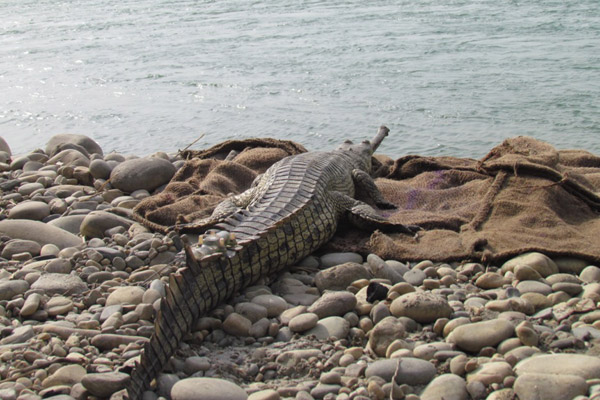 Among the largest and most endangered crocodilians in the world, the gharial (Gavialis gangeticus) is on the verge of extinction today. This harmless fish-eating crocodile has fewer than 200 adult breeding individuals in the wild, their numbers having plummeted rapidly over the past few decades due to destruction of their riverine habitats, entanglement in fishing […]
Among the largest and most endangered crocodilians in the world, the gharial (Gavialis gangeticus) is on the verge of extinction today. This harmless fish-eating crocodile has fewer than 200 adult breeding individuals in the wild, their numbers having plummeted rapidly over the past few decades due to destruction of their riverine habitats, entanglement in fishing […]
Fish-terrorizing, prehistoric-looking turtle actually three species
 An alligator snapping turtle. Photo by: Garry Tucker/USFWS. So, you’re a fish swimming in a river in Louisiana. Hungry, you see a little worm wiggling out from the river bed. You swoop in for the ambush only to have that little worm turn into the gaping maw of some prehistoric-looking monster out of fishy nightmares. […]
An alligator snapping turtle. Photo by: Garry Tucker/USFWS. So, you’re a fish swimming in a river in Louisiana. Hungry, you see a little worm wiggling out from the river bed. You swoop in for the ambush only to have that little worm turn into the gaping maw of some prehistoric-looking monster out of fishy nightmares. […]
Bangladesh plans massive coal plant in world’s biggest mangrove forest
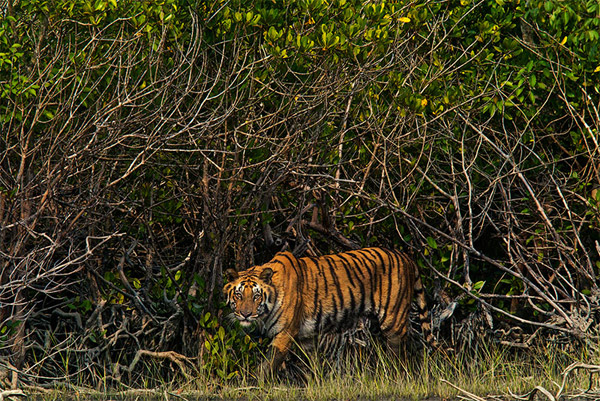 This is an expanded version of an article that ran on Yale e360 on October 29th, 2013: A Key Mangrove Forest Faces Major Threat from a Coal Plant. Bengal tiger in the Sundarbans mangrove forest. Photo by: Steve Winter/National Geographic and Panthera. On October 22nd Bangladeshi and Indian officials were supposed to hold a ceremony […]
This is an expanded version of an article that ran on Yale e360 on October 29th, 2013: A Key Mangrove Forest Faces Major Threat from a Coal Plant. Bengal tiger in the Sundarbans mangrove forest. Photo by: Steve Winter/National Geographic and Panthera. On October 22nd Bangladeshi and Indian officials were supposed to hold a ceremony […]
Endangered chimps and forest elephants found in rainforest to be logged for palm oil
 A biological survey of forests slated for destruction for a palm oil project in Cameroon has uncovered 23 species of large mammals, including the world’s most endangered chimpanzee subspecies, the Nigeria-Cameroon chimpanzee (Pan troglodytes ellioti). The project in question, operated by U.S.-based company Herakles Farms, has come under stiff criticism both locally and abroad for […]
A biological survey of forests slated for destruction for a palm oil project in Cameroon has uncovered 23 species of large mammals, including the world’s most endangered chimpanzee subspecies, the Nigeria-Cameroon chimpanzee (Pan troglodytes ellioti). The project in question, operated by U.S.-based company Herakles Farms, has come under stiff criticism both locally and abroad for […]
Rare and threatened freshwater fish plundered for aquarium trade in India
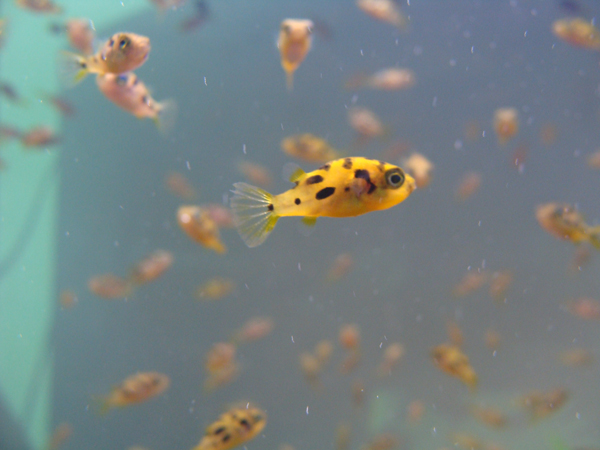 Thirty percent of the fish exported from India in the past seven years were from dozens of threatened species including the endangered red-lined torpedo barb (Puntius denisonii) and the miss kerala look alike (Puntius chalakkudiensis) amongst others, according to a recently published paper in Biological Conservation. By documenting the extent and impact of the trade […]
Thirty percent of the fish exported from India in the past seven years were from dozens of threatened species including the endangered red-lined torpedo barb (Puntius denisonii) and the miss kerala look alike (Puntius chalakkudiensis) amongst others, according to a recently published paper in Biological Conservation. By documenting the extent and impact of the trade […]
Forgotten species: the arapaima or ‘dinosaur fish’
 Everyone knows the tiger, the panda, the blue whale, but what about the other five to thirty million species estimated to inhabit our Earth? Many of these marvelous, stunning, and rare species have received little attention from the media, conservation groups, and the public. This series is an attempt to give these ‘forgotten species‘ some […]
Everyone knows the tiger, the panda, the blue whale, but what about the other five to thirty million species estimated to inhabit our Earth? Many of these marvelous, stunning, and rare species have received little attention from the media, conservation groups, and the public. This series is an attempt to give these ‘forgotten species‘ some […]
Over 700 species added to the threatened categories on the IUCN Red List (photos)
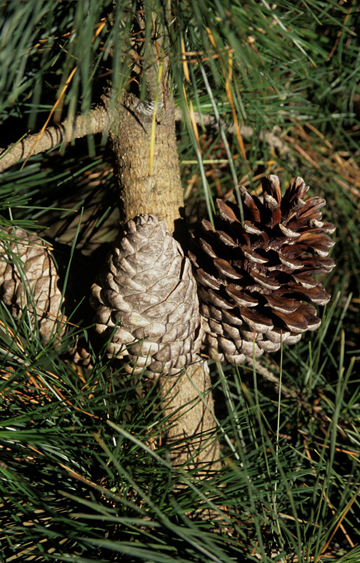 In another sign of the global biodiversity crisis, the IUCN Red List has added 715 species to its threatened categories of Vulnerable, Endangered, and Critically Endangered in this year’s update. Some of these species were evaluated by the IUCN Red List for the first time while others saw their conditions deteriorate, such as the the […]
In another sign of the global biodiversity crisis, the IUCN Red List has added 715 species to its threatened categories of Vulnerable, Endangered, and Critically Endangered in this year’s update. Some of these species were evaluated by the IUCN Red List for the first time while others saw their conditions deteriorate, such as the the […]
Pesticides decimating dragonflies and other aquatic insects
 While recent research (and media attention) has focused on the alleged negative impacts of pesticides on bees, the problem may be far broader according to a new study in the Proceedings of the US Academy of Sciences (PNAS). Looking at over 50 streams in Germany, France, and Australia, scientists in Europe and Australia found that […]
While recent research (and media attention) has focused on the alleged negative impacts of pesticides on bees, the problem may be far broader according to a new study in the Proceedings of the US Academy of Sciences (PNAS). Looking at over 50 streams in Germany, France, and Australia, scientists in Europe and Australia found that […]
Conserving the long-neglected freshwater fish of Borneo
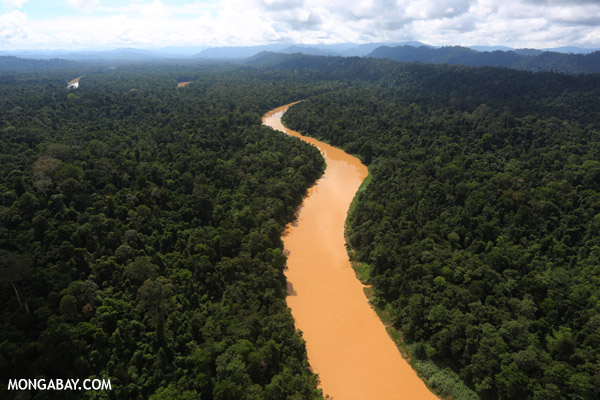 The 2013 Zoos and Aquariums: Committing to Conservation (ZACC) conference runs from July 8th—July 12th in Des Moines, Iowa, hosted by the Blank Park Zoo. Ahead of the event, Mongabay.com is running a series of Q&As with presenters. For more interviews, please see our ZACC feed. The Kinabatangan River in the Malaysian state of Sabah, […]
The 2013 Zoos and Aquariums: Committing to Conservation (ZACC) conference runs from July 8th—July 12th in Des Moines, Iowa, hosted by the Blank Park Zoo. Ahead of the event, Mongabay.com is running a series of Q&As with presenters. For more interviews, please see our ZACC feed. The Kinabatangan River in the Malaysian state of Sabah, […]
China approves another mega-dam that will imperil endangered species
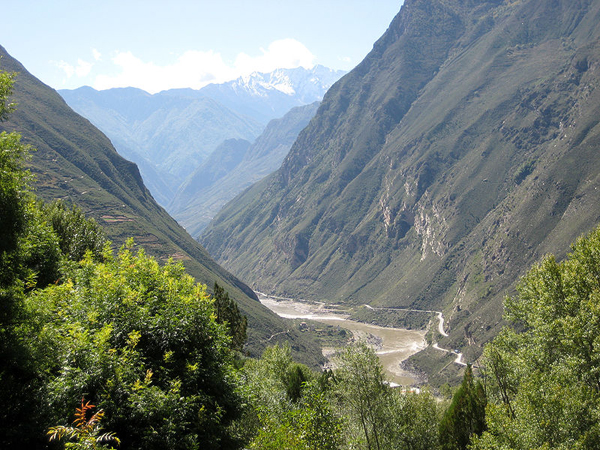 Chinese environmental authorities have approved construction plans for what could become the world’s tallest dam, while acknowledging that the project would affect endangered plants and rare fish species. The 314 meter-high dam (1,030ft) will serve the Shuangjiangkou hydropower project along the Dadu river in south-western Sichuan province, according to China’s state news agency, Xinhua. A […]
Chinese environmental authorities have approved construction plans for what could become the world’s tallest dam, while acknowledging that the project would affect endangered plants and rare fish species. The 314 meter-high dam (1,030ft) will serve the Shuangjiangkou hydropower project along the Dadu river in south-western Sichuan province, according to China’s state news agency, Xinhua. A […]
World’s rarest duck on the rebound in Madagascar
 After a final sighting in 1991, the Madagascar pochard was thought to have vanished for good. But this diving duck was rediscovered in 2006 when a flock of 22 individuals was found on Lake Matsaborimena in northern Madagascar by conservationists during an expedition. Soon after Madagascar pochard eggs were taken and incubated in a joint […]
After a final sighting in 1991, the Madagascar pochard was thought to have vanished for good. But this diving duck was rediscovered in 2006 when a flock of 22 individuals was found on Lake Matsaborimena in northern Madagascar by conservationists during an expedition. Soon after Madagascar pochard eggs were taken and incubated in a joint […]
The river of plenty: uncovering the secrets of the amazing Mekong
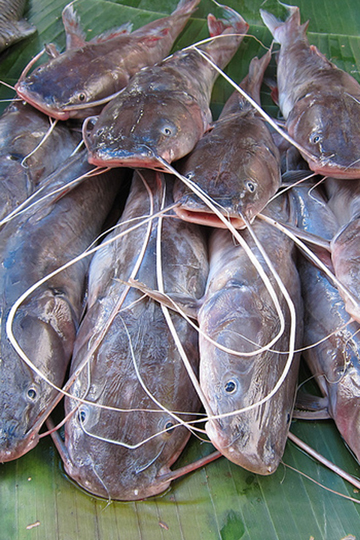 Home to giant catfish and stingrays, feeding over 60 million people, and with the largest abundance of freshwater fish in the world, the Mekong River, and its numerous tributaries, brings food, culture, and life to much of Southeast Asia. Despite this, little is known about the biodiversity and ecosystems of the Mekong, which is second […]
Home to giant catfish and stingrays, feeding over 60 million people, and with the largest abundance of freshwater fish in the world, the Mekong River, and its numerous tributaries, brings food, culture, and life to much of Southeast Asia. Despite this, little is known about the biodiversity and ecosystems of the Mekong, which is second […]
Yangtze porpoise down to 1,000 animals as world’s most degraded river may soon claim another extinction
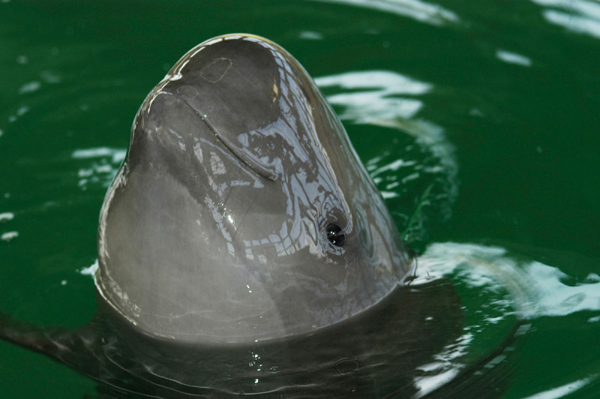 A survey late last year found that the Yangtze finless porpoise (Neophocaena asiaeorientalis asiaeorientalis) population has been cut in half in just six years. During a 44-day survey, experts estimated 1,000 river porpoises inhabited the river and adjoining lakes, down from around 2,000 in 2006. The ecology of China’s Yangtze River has been decimated the […]
A survey late last year found that the Yangtze finless porpoise (Neophocaena asiaeorientalis asiaeorientalis) population has been cut in half in just six years. During a 44-day survey, experts estimated 1,000 river porpoises inhabited the river and adjoining lakes, down from around 2,000 in 2006. The ecology of China’s Yangtze River has been decimated the […]
Mekong dam spree could create regional food crisis
 A fisherman on the Mekong River in Laos. Photo by: Rhett A. Butler. Fish are a hugely important protein source for many people around the world. This is no more evident than along the lower Mekong River delta where an estimated 48 million people depend directly on the river for food and livelihoods. But now […]
A fisherman on the Mekong River in Laos. Photo by: Rhett A. Butler. Fish are a hugely important protein source for many people around the world. This is no more evident than along the lower Mekong River delta where an estimated 48 million people depend directly on the river for food and livelihoods. But now […]
Chinook salmon return to Olympic National Park after dam demolished
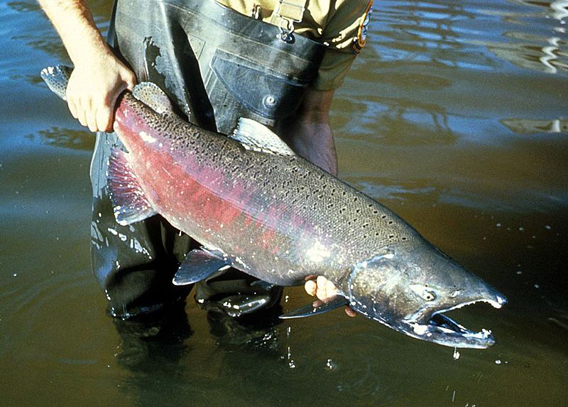 Chinook salmon. Photo by: USGS. In March of this year the Elwha Dam, which had stood for 99 years, was demolished in the U.S. state of Washington. Five months later, Chinook salmon (Oncorhynchus tshawytscha) made their way down the river to long-blocked off habitat and entered Olympic National Park. “As I saw the fish roll, […]
Chinook salmon. Photo by: USGS. In March of this year the Elwha Dam, which had stood for 99 years, was demolished in the U.S. state of Washington. Five months later, Chinook salmon (Oncorhynchus tshawytscha) made their way down the river to long-blocked off habitat and entered Olympic National Park. “As I saw the fish roll, […]
North American freshwater fish going extinct at rate over 800 times the fossil record
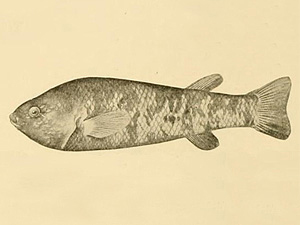 Since 1898 North America has lost at least 39 species of freshwater fish, according to a new study in Bioscience, and an additional 18 subspecies. Moreover, the loss of freshwater fish on the continent seems to be increasing, as the rate jumped by 25 percent since 1989, though even this data may be low. “Estimates […]
Since 1898 North America has lost at least 39 species of freshwater fish, according to a new study in Bioscience, and an additional 18 subspecies. Moreover, the loss of freshwater fish on the continent seems to be increasing, as the rate jumped by 25 percent since 1989, though even this data may be low. “Estimates […]
Featured video: restoring rivers in the Tongass Rainforest
A new video highlights recent efforts to restore rivers in the Tongass Forest, the world’s largest intact temperate rainforest. Industrial logging in vital watersheds have hurt salmon populations and other wildlife in the region, an issue the government, along with several partners, are now trying to rectify. The salmon industry in the region is worth […]
Cute animal pictures of the day: smooth-coated otter cubs
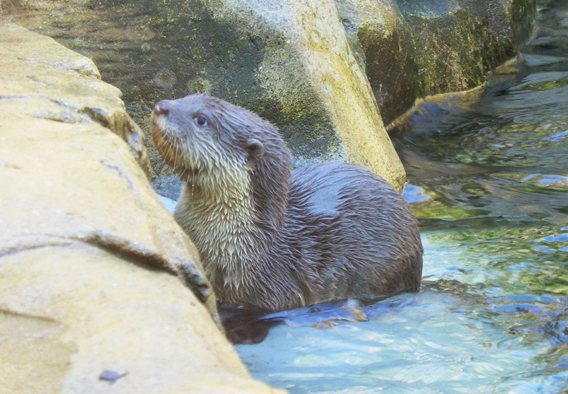 Two male smooth-coated otter cubs were recently born at the Colchester Zoo. Photo by: Colchester Zoo. Smooth-coated otters (Lutrogale perspicillata) are found from India to Sumatra. They are listed as Vulnerable by the IUCN Red List due to destruction of wetlands for hydropower, agriculture, and other development. Widespread pollution and a decline in prey pose […]
Two male smooth-coated otter cubs were recently born at the Colchester Zoo. Photo by: Colchester Zoo. Smooth-coated otters (Lutrogale perspicillata) are found from India to Sumatra. They are listed as Vulnerable by the IUCN Red List due to destruction of wetlands for hydropower, agriculture, and other development. Widespread pollution and a decline in prey pose […]
Conservationists successfully hatch world’s fourth most endangered turtle
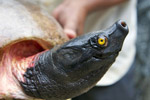 The world’s fourth most endangered turtle has received a happy boost from breeding efforts, reports the AFP. Bangladeshi scientists have successfully hatched 25 northern river terrapins (Batagur baska) using an artificial beach constructed in the country’s Bhawal National Park. Scientists captured 19 wild turtles (five females and fourteen males) as an insurance population against extinction, […]
The world’s fourth most endangered turtle has received a happy boost from breeding efforts, reports the AFP. Bangladeshi scientists have successfully hatched 25 northern river terrapins (Batagur baska) using an artificial beach constructed in the country’s Bhawal National Park. Scientists captured 19 wild turtles (five females and fourteen males) as an insurance population against extinction, […]
Wildlife in the tropics plummets by over 60 percent
 Devastated rainforest in Indonesian Borneo. Photo by: Rhett A. Butler. In 48 years wildlife populations in the tropics, the region that holds the bulk of the world’s biodiversity, have fallen by an alarming 61 percent, according to the most recent update to the Living Planet Index. Produced by the World Wide Fund for Nature (WWF) […]
Devastated rainforest in Indonesian Borneo. Photo by: Rhett A. Butler. In 48 years wildlife populations in the tropics, the region that holds the bulk of the world’s biodiversity, have fallen by an alarming 61 percent, according to the most recent update to the Living Planet Index. Produced by the World Wide Fund for Nature (WWF) […]
Over 30 Yangtze porpoises found dead in China as population nears extinction
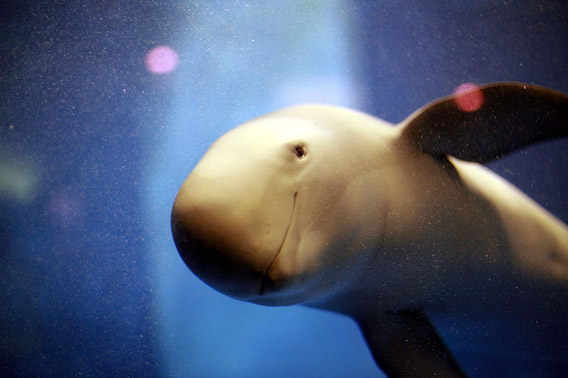 There are two subspecies of the finless porpoise, one is found in the Yangtze River, the other in Japan, Taiwan, and South Korea. This individual is the latter and was photographed in a Japanese aquarium. Photo by: Kenichi Nobusue. Six years after the Yangtze river dolphin (Lipotes vexillifer), or baiji, was declared “functionally extinct” by […]
There are two subspecies of the finless porpoise, one is found in the Yangtze River, the other in Japan, Taiwan, and South Korea. This individual is the latter and was photographed in a Japanese aquarium. Photo by: Kenichi Nobusue. Six years after the Yangtze river dolphin (Lipotes vexillifer), or baiji, was declared “functionally extinct” by […]
Eye-popping purple crabs discovered in the Philippines
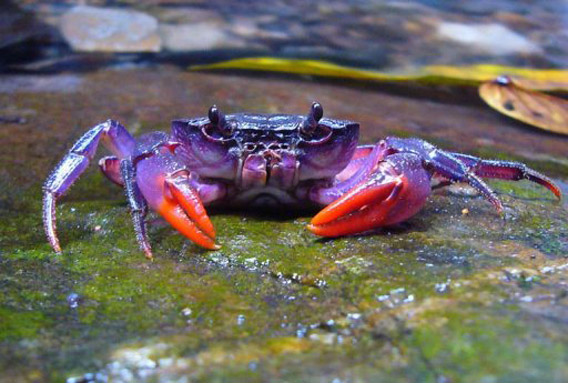 New species of purple crab: Insulamon palawanense. Photo by: Hendrik Freitag. Scientists have discovered four new species of brilliantly-colored freshwater crabs on the Philippine island of Palawan. Described in the Raffles Bulletin of Zoology, the new species expands the genus, Insulamon, from one known crab species to five. Although its ecosystems are threatened by widespread […]
New species of purple crab: Insulamon palawanense. Photo by: Hendrik Freitag. Scientists have discovered four new species of brilliantly-colored freshwater crabs on the Philippine island of Palawan. Described in the Raffles Bulletin of Zoology, the new species expands the genus, Insulamon, from one known crab species to five. Although its ecosystems are threatened by widespread […]
Hail Mary effort aims to save the world’s most endangered turtles
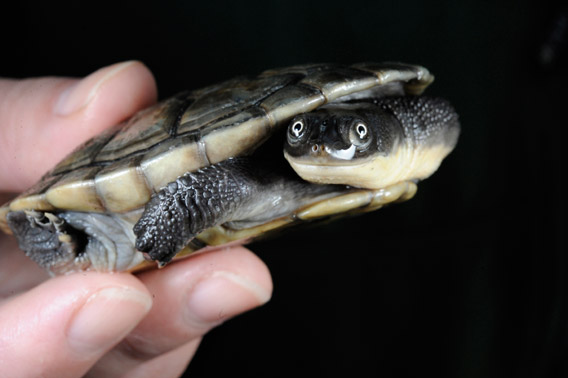 Roti snake island turtle, which is number 12 of the world’s most endangered turtles, are being captive bred at the WCS’s Bronx Zoo. Photo by: Julie Larsen Maher/WCS. The Wildlife Conservation Society (WCS) has pledged to work with all of its institutions to save at least half of the world’s most 25 endangered turtles as […]
Roti snake island turtle, which is number 12 of the world’s most endangered turtles, are being captive bred at the WCS’s Bronx Zoo. Photo by: Julie Larsen Maher/WCS. The Wildlife Conservation Society (WCS) has pledged to work with all of its institutions to save at least half of the world’s most 25 endangered turtles as […]
How tiny otters survive in agricultural India
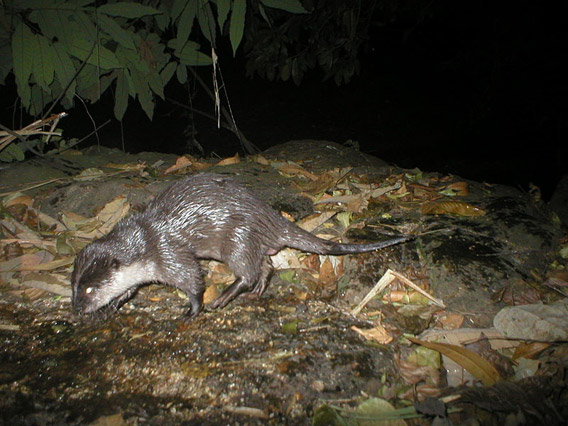 An Asian small-clawed otter caught on camera trap in the Western Ghats. Photo by: Clusteronefloyd. In the fragmented rainforests of India, many animals must move through human-modified landscapes such as agricultural fields to survive. This includes the world’s smallest otter species: the Asian small-clawed otter (Aonyx cinereus). According to a new study published in mongabay.com’s […]
An Asian small-clawed otter caught on camera trap in the Western Ghats. Photo by: Clusteronefloyd. In the fragmented rainforests of India, many animals must move through human-modified landscapes such as agricultural fields to survive. This includes the world’s smallest otter species: the Asian small-clawed otter (Aonyx cinereus). According to a new study published in mongabay.com’s […]
Photo: new blue, red, yellow lizard discovered in the Andes
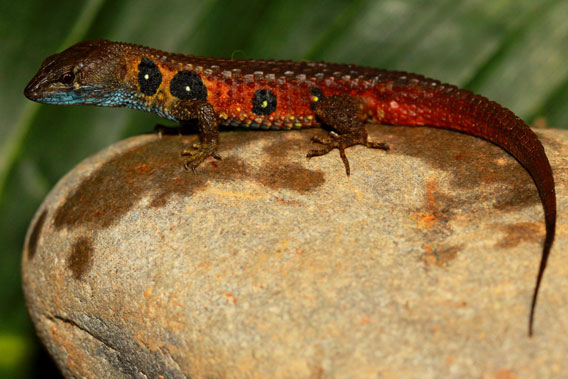 A male Potamites montanicola, a new species of lizard discovered in the Peruvian Andes. Photo courtesy of German Chávez. Researchers have discovered a new species of lizard in the Peruvian Andes, whose males sport beautiful colors, according to a paper in ZooKeys. The highest-dwelling known species of the genus Potamites, the new lizard, dubbed Potamites […]
A male Potamites montanicola, a new species of lizard discovered in the Peruvian Andes. Photo courtesy of German Chávez. Researchers have discovered a new species of lizard in the Peruvian Andes, whose males sport beautiful colors, according to a paper in ZooKeys. The highest-dwelling known species of the genus Potamites, the new lizard, dubbed Potamites […]
Saving the world’s biggest river otter
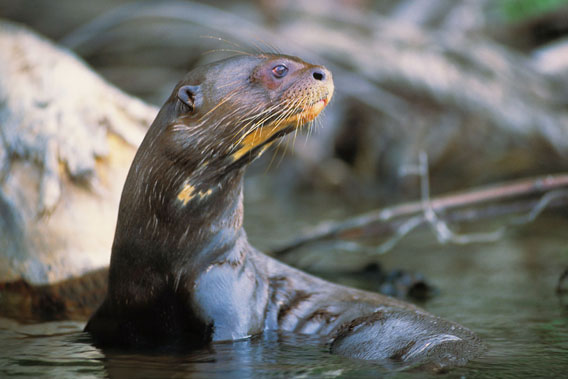 The giant river otter. Photo by: Frank Hajek. Behavior and conservation of the Amazon’s giant river otter. Charismatic, vocal, unpredictable, domestic, and playful are all adjectives that aptly describe the giant river otter (Pteronura brasiliensis), one of the Amazon’s most spectacular big mammals. As its name suggest, this otter is the longest member of the […]
The giant river otter. Photo by: Frank Hajek. Behavior and conservation of the Amazon’s giant river otter. Charismatic, vocal, unpredictable, domestic, and playful are all adjectives that aptly describe the giant river otter (Pteronura brasiliensis), one of the Amazon’s most spectacular big mammals. As its name suggest, this otter is the longest member of the […]
Picture of the day: nearly-extinct turtle released into the wild in Cambodia
-small.568.jpg) Children watch the rereleasing of a southern river terrapin back into the wild. Photo by: Eleanor Briggs. Only around 200 southern river terrapins (Batagur affinis) survive in the wild, but today at least the species got some good news. A female terrapin was released back into the Sre Ambel River with much fanfare after being […]
Children watch the rereleasing of a southern river terrapin back into the wild. Photo by: Eleanor Briggs. Only around 200 southern river terrapins (Batagur affinis) survive in the wild, but today at least the species got some good news. A female terrapin was released back into the Sre Ambel River with much fanfare after being […]
Florida loses two species to extinction
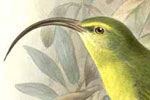 The US Fish and Wildlife Service announced yesterday that the believe two species in Florida have vanished into the long dark night: the South Florida rainbow snake (Farancia erytrogramma seminola) and the Florida fairy shrimp (Dexteria floridana). The species were under review for possibly being added to the Endangered Species Act (ESA), but it’s likely […]
The US Fish and Wildlife Service announced yesterday that the believe two species in Florida have vanished into the long dark night: the South Florida rainbow snake (Farancia erytrogramma seminola) and the Florida fairy shrimp (Dexteria floridana). The species were under review for possibly being added to the Endangered Species Act (ESA), but it’s likely […]
Opposition rises against Mekong dam as governments ponder decision
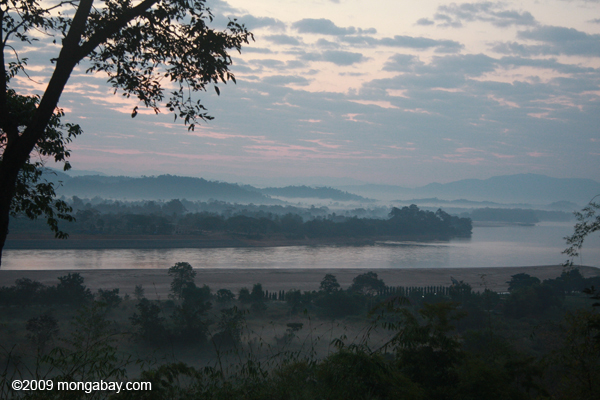 Mekong river at Chiang Saen in Thailand. Photo by: Rhett A. Butler. As the governments of Laos, Thailand, Cambodia, and Vietnam ready to meet on April 19th to decide whether or not to move forward on the Xayaburi Dam, critics of Mekong River hydroelectric project have warned that the dam will devastate freshwater biodiversity and […]
Mekong river at Chiang Saen in Thailand. Photo by: Rhett A. Butler. As the governments of Laos, Thailand, Cambodia, and Vietnam ready to meet on April 19th to decide whether or not to move forward on the Xayaburi Dam, critics of Mekong River hydroelectric project have warned that the dam will devastate freshwater biodiversity and […]
Giant fish help grow the Amazon rainforest
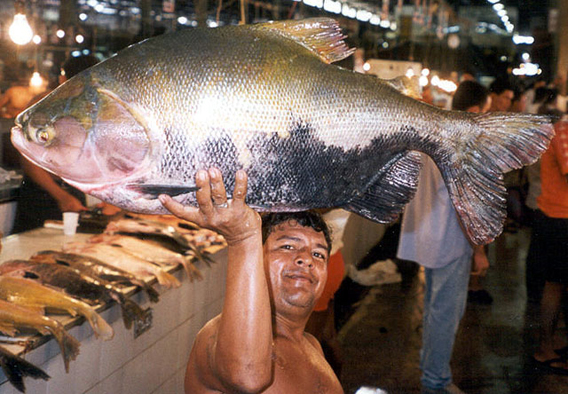 Researchers discover that overexploited fish are long-distance seed dispersers. The giant tambaqui (Colossoma macropomum) in Manaus Fish Market, Brazil. Photo by: Thorke Østergaard. A fruit in the flooded Amazon falls from a tree and plops in the water. Before it can even sink to the floor, a 60-pound monster fish with a voracious appetite gobbles […]
Researchers discover that overexploited fish are long-distance seed dispersers. The giant tambaqui (Colossoma macropomum) in Manaus Fish Market, Brazil. Photo by: Thorke Østergaard. A fruit in the flooded Amazon falls from a tree and plops in the water. Before it can even sink to the floor, a 60-pound monster fish with a voracious appetite gobbles […]
More biodiversity equals cleaner water, but why?
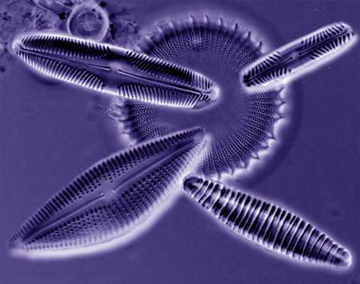 New study shows how greater biodiversity more efficiently scrubs pollutants from freshwater. A new landmark study not only proves that adding more species to a freshwater stream linearly increases the ecosystem’s ability to clean pollutants, but also shows why. The study, published in Nature found that by increasing the biodiversity of a lab controlled mini-stream […]
New study shows how greater biodiversity more efficiently scrubs pollutants from freshwater. A new landmark study not only proves that adding more species to a freshwater stream linearly increases the ecosystem’s ability to clean pollutants, but also shows why. The study, published in Nature found that by increasing the biodiversity of a lab controlled mini-stream […]
Photos: two new freshwater stingrays discovered in the Amazon
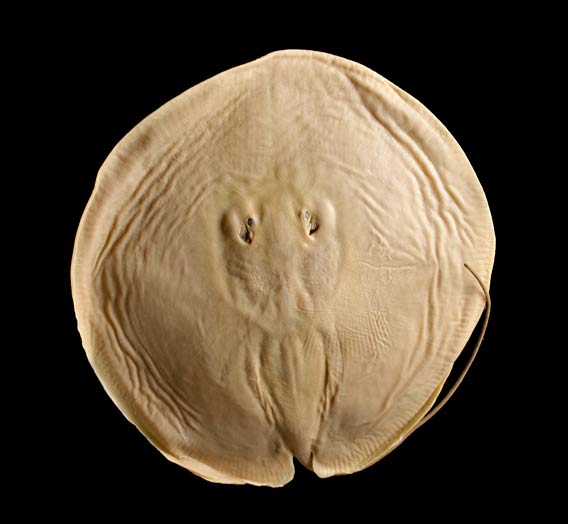 Heliotrygon gomesi in dorsal view. Photo taken by Ken Jones, University of Toronto at Scarborough Staff Photographer. Few people probably realize that in the rivers and lakes of the Amazon rainforest large stingrays glide, searching for crustaceans and small fish. Equipped with a powerful barbed tail they are often feared by locals. However, even as […]
Heliotrygon gomesi in dorsal view. Photo taken by Ken Jones, University of Toronto at Scarborough Staff Photographer. Few people probably realize that in the rivers and lakes of the Amazon rainforest large stingrays glide, searching for crustaceans and small fish. Equipped with a powerful barbed tail they are often feared by locals. However, even as […]
Feeds: news | india | latam | brasil | indonesia
 A male Cherax pulcher. Photo by: Christian Lukhaup. An independent researcher has described a spectacular red, white, and blue crayfish just in time for the fourth of July. The new species, named Cherax pulcher, was first discovered in Japanese pet shops by Christian Lukhaup before he finally tracked down the animal to creeks in remote […]
A male Cherax pulcher. Photo by: Christian Lukhaup. An independent researcher has described a spectacular red, white, and blue crayfish just in time for the fourth of July. The new species, named Cherax pulcher, was first discovered in Japanese pet shops by Christian Lukhaup before he finally tracked down the animal to creeks in remote […] Releasing the giant mamma freshwater stingray. Photo courtesy of Ocean Mysteries and Jeff Corwin. Conservationists and scientists have managed to catch-and-release what could be the world’s biggest freshwater fish ever for an upcoming episode of Ocean Mysteries. Naturalist and host of the show, Jeff Corwin—along with wildlife veterinarian, Nantarika Chansue, and the tourist fishing group, […]
Releasing the giant mamma freshwater stingray. Photo courtesy of Ocean Mysteries and Jeff Corwin. Conservationists and scientists have managed to catch-and-release what could be the world’s biggest freshwater fish ever for an upcoming episode of Ocean Mysteries. Naturalist and host of the show, Jeff Corwin—along with wildlife veterinarian, Nantarika Chansue, and the tourist fishing group, […] Pregnant mothers, children, and even adults could face health problems from gold mining pollution in Amazonian Peru An aerial view of artisinal open pit gold mining in the Amazon. Photo by: Rhett A. Butler. Artisanal, often illegal gold-mining, has swept across portions of the Peruvian Amazon over last decade, driven in part by a rising […]
Pregnant mothers, children, and even adults could face health problems from gold mining pollution in Amazonian Peru An aerial view of artisinal open pit gold mining in the Amazon. Photo by: Rhett A. Butler. Artisanal, often illegal gold-mining, has swept across portions of the Peruvian Amazon over last decade, driven in part by a rising […] Reduced river flows below irrigation dams decimate freshwater dolphins Rare photo showing two Indus River dolphins in the wild. Photo credit: Albert Reichert, CC-BY.N The Indus River dolphin (Platanista gangetica minor) is an endangered freshwater mammal found only in the Indus River and tributaries draining the Himalayas. Since 1879, the dolphin—locally known as the bhulan—has […]
Reduced river flows below irrigation dams decimate freshwater dolphins Rare photo showing two Indus River dolphins in the wild. Photo credit: Albert Reichert, CC-BY.N The Indus River dolphin (Platanista gangetica minor) is an endangered freshwater mammal found only in the Indus River and tributaries draining the Himalayas. Since 1879, the dolphin—locally known as the bhulan—has […] On the morning of July 14, 2002 Qi Qi ate breakfast as he always did. As the world’s only captive baiji – or Yangtze river dolphin (Lipotes vexillifer) – Qi Qi was something of a celebrity in China and his caretakers kept a close eye on his health. That care may explain why, after being […]
On the morning of July 14, 2002 Qi Qi ate breakfast as he always did. As the world’s only captive baiji – or Yangtze river dolphin (Lipotes vexillifer) – Qi Qi was something of a celebrity in China and his caretakers kept a close eye on his health. That care may explain why, after being […] A giant river otter with a fish in its mouth. Photo by: Frank Hajek. Lobo de río, or river wolf, is the very evocative Spanish name for one of the Amazon’s most spectacular mammals: the giant river otter (Pteronura brasiliensis). This highly intelligent, deeply social, and simply charming freshwater predator almost vanished entirely due to […]
A giant river otter with a fish in its mouth. Photo by: Frank Hajek. Lobo de río, or river wolf, is the very evocative Spanish name for one of the Amazon’s most spectacular mammals: the giant river otter (Pteronura brasiliensis). This highly intelligent, deeply social, and simply charming freshwater predator almost vanished entirely due to […] An image of the new species showing the lack of eyes. This specimen had its flesh cleared and researchers stained the bones to show the skeleton. Photo courtesy of: Chakrabarty et al. In the dark caves of southern Indiana in the United States, scientists have discovered a new species of cavefish that are blind, pinkish, […]
An image of the new species showing the lack of eyes. This specimen had its flesh cleared and researchers stained the bones to show the skeleton. Photo courtesy of: Chakrabarty et al. In the dark caves of southern Indiana in the United States, scientists have discovered a new species of cavefish that are blind, pinkish, […] Among the largest and most endangered crocodilians in the world, the gharial (Gavialis gangeticus) is on the verge of extinction today. This harmless fish-eating crocodile has fewer than 200 adult breeding individuals in the wild, their numbers having plummeted rapidly over the past few decades due to destruction of their riverine habitats, entanglement in fishing […]
Among the largest and most endangered crocodilians in the world, the gharial (Gavialis gangeticus) is on the verge of extinction today. This harmless fish-eating crocodile has fewer than 200 adult breeding individuals in the wild, their numbers having plummeted rapidly over the past few decades due to destruction of their riverine habitats, entanglement in fishing […] An alligator snapping turtle. Photo by: Garry Tucker/USFWS. So, you’re a fish swimming in a river in Louisiana. Hungry, you see a little worm wiggling out from the river bed. You swoop in for the ambush only to have that little worm turn into the gaping maw of some prehistoric-looking monster out of fishy nightmares. […]
An alligator snapping turtle. Photo by: Garry Tucker/USFWS. So, you’re a fish swimming in a river in Louisiana. Hungry, you see a little worm wiggling out from the river bed. You swoop in for the ambush only to have that little worm turn into the gaping maw of some prehistoric-looking monster out of fishy nightmares. […] This is an expanded version of an article that ran on Yale e360 on October 29th, 2013: A Key Mangrove Forest Faces Major Threat from a Coal Plant. Bengal tiger in the Sundarbans mangrove forest. Photo by: Steve Winter/National Geographic and Panthera. On October 22nd Bangladeshi and Indian officials were supposed to hold a ceremony […]
This is an expanded version of an article that ran on Yale e360 on October 29th, 2013: A Key Mangrove Forest Faces Major Threat from a Coal Plant. Bengal tiger in the Sundarbans mangrove forest. Photo by: Steve Winter/National Geographic and Panthera. On October 22nd Bangladeshi and Indian officials were supposed to hold a ceremony […] A biological survey of forests slated for destruction for a palm oil project in Cameroon has uncovered 23 species of large mammals, including the world’s most endangered chimpanzee subspecies, the Nigeria-Cameroon chimpanzee (Pan troglodytes ellioti). The project in question, operated by U.S.-based company Herakles Farms, has come under stiff criticism both locally and abroad for […]
A biological survey of forests slated for destruction for a palm oil project in Cameroon has uncovered 23 species of large mammals, including the world’s most endangered chimpanzee subspecies, the Nigeria-Cameroon chimpanzee (Pan troglodytes ellioti). The project in question, operated by U.S.-based company Herakles Farms, has come under stiff criticism both locally and abroad for […] Thirty percent of the fish exported from India in the past seven years were from dozens of threatened species including the endangered red-lined torpedo barb (Puntius denisonii) and the miss kerala look alike (Puntius chalakkudiensis) amongst others, according to a recently published paper in Biological Conservation. By documenting the extent and impact of the trade […]
Thirty percent of the fish exported from India in the past seven years were from dozens of threatened species including the endangered red-lined torpedo barb (Puntius denisonii) and the miss kerala look alike (Puntius chalakkudiensis) amongst others, according to a recently published paper in Biological Conservation. By documenting the extent and impact of the trade […] Everyone knows the tiger, the panda, the blue whale, but what about the other five to thirty million species estimated to inhabit our Earth? Many of these marvelous, stunning, and rare species have received little attention from the media, conservation groups, and the public. This series is an attempt to give these ‘forgotten species‘ some […]
Everyone knows the tiger, the panda, the blue whale, but what about the other five to thirty million species estimated to inhabit our Earth? Many of these marvelous, stunning, and rare species have received little attention from the media, conservation groups, and the public. This series is an attempt to give these ‘forgotten species‘ some […] In another sign of the global biodiversity crisis, the IUCN Red List has added 715 species to its threatened categories of Vulnerable, Endangered, and Critically Endangered in this year’s update. Some of these species were evaluated by the IUCN Red List for the first time while others saw their conditions deteriorate, such as the the […]
In another sign of the global biodiversity crisis, the IUCN Red List has added 715 species to its threatened categories of Vulnerable, Endangered, and Critically Endangered in this year’s update. Some of these species were evaluated by the IUCN Red List for the first time while others saw their conditions deteriorate, such as the the […] While recent research (and media attention) has focused on the alleged negative impacts of pesticides on bees, the problem may be far broader according to a new study in the Proceedings of the US Academy of Sciences (PNAS). Looking at over 50 streams in Germany, France, and Australia, scientists in Europe and Australia found that […]
While recent research (and media attention) has focused on the alleged negative impacts of pesticides on bees, the problem may be far broader according to a new study in the Proceedings of the US Academy of Sciences (PNAS). Looking at over 50 streams in Germany, France, and Australia, scientists in Europe and Australia found that […] The 2013 Zoos and Aquariums: Committing to Conservation (ZACC) conference runs from July 8th—July 12th in Des Moines, Iowa, hosted by the Blank Park Zoo. Ahead of the event, Mongabay.com is running a series of Q&As with presenters. For more interviews, please see our ZACC feed. The Kinabatangan River in the Malaysian state of Sabah, […]
The 2013 Zoos and Aquariums: Committing to Conservation (ZACC) conference runs from July 8th—July 12th in Des Moines, Iowa, hosted by the Blank Park Zoo. Ahead of the event, Mongabay.com is running a series of Q&As with presenters. For more interviews, please see our ZACC feed. The Kinabatangan River in the Malaysian state of Sabah, […] Chinese environmental authorities have approved construction plans for what could become the world’s tallest dam, while acknowledging that the project would affect endangered plants and rare fish species. The 314 meter-high dam (1,030ft) will serve the Shuangjiangkou hydropower project along the Dadu river in south-western Sichuan province, according to China’s state news agency, Xinhua. A […]
Chinese environmental authorities have approved construction plans for what could become the world’s tallest dam, while acknowledging that the project would affect endangered plants and rare fish species. The 314 meter-high dam (1,030ft) will serve the Shuangjiangkou hydropower project along the Dadu river in south-western Sichuan province, according to China’s state news agency, Xinhua. A […] After a final sighting in 1991, the Madagascar pochard was thought to have vanished for good. But this diving duck was rediscovered in 2006 when a flock of 22 individuals was found on Lake Matsaborimena in northern Madagascar by conservationists during an expedition. Soon after Madagascar pochard eggs were taken and incubated in a joint […]
After a final sighting in 1991, the Madagascar pochard was thought to have vanished for good. But this diving duck was rediscovered in 2006 when a flock of 22 individuals was found on Lake Matsaborimena in northern Madagascar by conservationists during an expedition. Soon after Madagascar pochard eggs were taken and incubated in a joint […] Home to giant catfish and stingrays, feeding over 60 million people, and with the largest abundance of freshwater fish in the world, the Mekong River, and its numerous tributaries, brings food, culture, and life to much of Southeast Asia. Despite this, little is known about the biodiversity and ecosystems of the Mekong, which is second […]
Home to giant catfish and stingrays, feeding over 60 million people, and with the largest abundance of freshwater fish in the world, the Mekong River, and its numerous tributaries, brings food, culture, and life to much of Southeast Asia. Despite this, little is known about the biodiversity and ecosystems of the Mekong, which is second […] A survey late last year found that the Yangtze finless porpoise (Neophocaena asiaeorientalis asiaeorientalis) population has been cut in half in just six years. During a 44-day survey, experts estimated 1,000 river porpoises inhabited the river and adjoining lakes, down from around 2,000 in 2006. The ecology of China’s Yangtze River has been decimated the […]
A survey late last year found that the Yangtze finless porpoise (Neophocaena asiaeorientalis asiaeorientalis) population has been cut in half in just six years. During a 44-day survey, experts estimated 1,000 river porpoises inhabited the river and adjoining lakes, down from around 2,000 in 2006. The ecology of China’s Yangtze River has been decimated the […] A fisherman on the Mekong River in Laos. Photo by: Rhett A. Butler. Fish are a hugely important protein source for many people around the world. This is no more evident than along the lower Mekong River delta where an estimated 48 million people depend directly on the river for food and livelihoods. But now […]
A fisherman on the Mekong River in Laos. Photo by: Rhett A. Butler. Fish are a hugely important protein source for many people around the world. This is no more evident than along the lower Mekong River delta where an estimated 48 million people depend directly on the river for food and livelihoods. But now […] Chinook salmon. Photo by: USGS. In March of this year the Elwha Dam, which had stood for 99 years, was demolished in the U.S. state of Washington. Five months later, Chinook salmon (Oncorhynchus tshawytscha) made their way down the river to long-blocked off habitat and entered Olympic National Park. “As I saw the fish roll, […]
Chinook salmon. Photo by: USGS. In March of this year the Elwha Dam, which had stood for 99 years, was demolished in the U.S. state of Washington. Five months later, Chinook salmon (Oncorhynchus tshawytscha) made their way down the river to long-blocked off habitat and entered Olympic National Park. “As I saw the fish roll, […] Since 1898 North America has lost at least 39 species of freshwater fish, according to a new study in Bioscience, and an additional 18 subspecies. Moreover, the loss of freshwater fish on the continent seems to be increasing, as the rate jumped by 25 percent since 1989, though even this data may be low. “Estimates […]
Since 1898 North America has lost at least 39 species of freshwater fish, according to a new study in Bioscience, and an additional 18 subspecies. Moreover, the loss of freshwater fish on the continent seems to be increasing, as the rate jumped by 25 percent since 1989, though even this data may be low. “Estimates […] Two male smooth-coated otter cubs were recently born at the Colchester Zoo. Photo by: Colchester Zoo. Smooth-coated otters (Lutrogale perspicillata) are found from India to Sumatra. They are listed as Vulnerable by the IUCN Red List due to destruction of wetlands for hydropower, agriculture, and other development. Widespread pollution and a decline in prey pose […]
Two male smooth-coated otter cubs were recently born at the Colchester Zoo. Photo by: Colchester Zoo. Smooth-coated otters (Lutrogale perspicillata) are found from India to Sumatra. They are listed as Vulnerable by the IUCN Red List due to destruction of wetlands for hydropower, agriculture, and other development. Widespread pollution and a decline in prey pose […] The world’s fourth most endangered turtle has received a happy boost from breeding efforts, reports the AFP. Bangladeshi scientists have successfully hatched 25 northern river terrapins (Batagur baska) using an artificial beach constructed in the country’s Bhawal National Park. Scientists captured 19 wild turtles (five females and fourteen males) as an insurance population against extinction, […]
The world’s fourth most endangered turtle has received a happy boost from breeding efforts, reports the AFP. Bangladeshi scientists have successfully hatched 25 northern river terrapins (Batagur baska) using an artificial beach constructed in the country’s Bhawal National Park. Scientists captured 19 wild turtles (five females and fourteen males) as an insurance population against extinction, […] Devastated rainforest in Indonesian Borneo. Photo by: Rhett A. Butler. In 48 years wildlife populations in the tropics, the region that holds the bulk of the world’s biodiversity, have fallen by an alarming 61 percent, according to the most recent update to the Living Planet Index. Produced by the World Wide Fund for Nature (WWF) […]
Devastated rainforest in Indonesian Borneo. Photo by: Rhett A. Butler. In 48 years wildlife populations in the tropics, the region that holds the bulk of the world’s biodiversity, have fallen by an alarming 61 percent, according to the most recent update to the Living Planet Index. Produced by the World Wide Fund for Nature (WWF) […] There are two subspecies of the finless porpoise, one is found in the Yangtze River, the other in Japan, Taiwan, and South Korea. This individual is the latter and was photographed in a Japanese aquarium. Photo by: Kenichi Nobusue. Six years after the Yangtze river dolphin (Lipotes vexillifer), or baiji, was declared “functionally extinct” by […]
There are two subspecies of the finless porpoise, one is found in the Yangtze River, the other in Japan, Taiwan, and South Korea. This individual is the latter and was photographed in a Japanese aquarium. Photo by: Kenichi Nobusue. Six years after the Yangtze river dolphin (Lipotes vexillifer), or baiji, was declared “functionally extinct” by […] New species of purple crab: Insulamon palawanense. Photo by: Hendrik Freitag. Scientists have discovered four new species of brilliantly-colored freshwater crabs on the Philippine island of Palawan. Described in the Raffles Bulletin of Zoology, the new species expands the genus, Insulamon, from one known crab species to five. Although its ecosystems are threatened by widespread […]
New species of purple crab: Insulamon palawanense. Photo by: Hendrik Freitag. Scientists have discovered four new species of brilliantly-colored freshwater crabs on the Philippine island of Palawan. Described in the Raffles Bulletin of Zoology, the new species expands the genus, Insulamon, from one known crab species to five. Although its ecosystems are threatened by widespread […] Roti snake island turtle, which is number 12 of the world’s most endangered turtles, are being captive bred at the WCS’s Bronx Zoo. Photo by: Julie Larsen Maher/WCS. The Wildlife Conservation Society (WCS) has pledged to work with all of its institutions to save at least half of the world’s most 25 endangered turtles as […]
Roti snake island turtle, which is number 12 of the world’s most endangered turtles, are being captive bred at the WCS’s Bronx Zoo. Photo by: Julie Larsen Maher/WCS. The Wildlife Conservation Society (WCS) has pledged to work with all of its institutions to save at least half of the world’s most 25 endangered turtles as […] An Asian small-clawed otter caught on camera trap in the Western Ghats. Photo by: Clusteronefloyd. In the fragmented rainforests of India, many animals must move through human-modified landscapes such as agricultural fields to survive. This includes the world’s smallest otter species: the Asian small-clawed otter (Aonyx cinereus). According to a new study published in mongabay.com’s […]
An Asian small-clawed otter caught on camera trap in the Western Ghats. Photo by: Clusteronefloyd. In the fragmented rainforests of India, many animals must move through human-modified landscapes such as agricultural fields to survive. This includes the world’s smallest otter species: the Asian small-clawed otter (Aonyx cinereus). According to a new study published in mongabay.com’s […] A male Potamites montanicola, a new species of lizard discovered in the Peruvian Andes. Photo courtesy of German Chávez. Researchers have discovered a new species of lizard in the Peruvian Andes, whose males sport beautiful colors, according to a paper in ZooKeys. The highest-dwelling known species of the genus Potamites, the new lizard, dubbed Potamites […]
A male Potamites montanicola, a new species of lizard discovered in the Peruvian Andes. Photo courtesy of German Chávez. Researchers have discovered a new species of lizard in the Peruvian Andes, whose males sport beautiful colors, according to a paper in ZooKeys. The highest-dwelling known species of the genus Potamites, the new lizard, dubbed Potamites […] The giant river otter. Photo by: Frank Hajek. Behavior and conservation of the Amazon’s giant river otter. Charismatic, vocal, unpredictable, domestic, and playful are all adjectives that aptly describe the giant river otter (Pteronura brasiliensis), one of the Amazon’s most spectacular big mammals. As its name suggest, this otter is the longest member of the […]
The giant river otter. Photo by: Frank Hajek. Behavior and conservation of the Amazon’s giant river otter. Charismatic, vocal, unpredictable, domestic, and playful are all adjectives that aptly describe the giant river otter (Pteronura brasiliensis), one of the Amazon’s most spectacular big mammals. As its name suggest, this otter is the longest member of the […]-small.568.jpg) Children watch the rereleasing of a southern river terrapin back into the wild. Photo by: Eleanor Briggs. Only around 200 southern river terrapins (Batagur affinis) survive in the wild, but today at least the species got some good news. A female terrapin was released back into the Sre Ambel River with much fanfare after being […]
Children watch the rereleasing of a southern river terrapin back into the wild. Photo by: Eleanor Briggs. Only around 200 southern river terrapins (Batagur affinis) survive in the wild, but today at least the species got some good news. A female terrapin was released back into the Sre Ambel River with much fanfare after being […] The US Fish and Wildlife Service announced yesterday that the believe two species in Florida have vanished into the long dark night: the South Florida rainbow snake (Farancia erytrogramma seminola) and the Florida fairy shrimp (Dexteria floridana). The species were under review for possibly being added to the Endangered Species Act (ESA), but it’s likely […]
The US Fish and Wildlife Service announced yesterday that the believe two species in Florida have vanished into the long dark night: the South Florida rainbow snake (Farancia erytrogramma seminola) and the Florida fairy shrimp (Dexteria floridana). The species were under review for possibly being added to the Endangered Species Act (ESA), but it’s likely […] Mekong river at Chiang Saen in Thailand. Photo by: Rhett A. Butler. As the governments of Laos, Thailand, Cambodia, and Vietnam ready to meet on April 19th to decide whether or not to move forward on the Xayaburi Dam, critics of Mekong River hydroelectric project have warned that the dam will devastate freshwater biodiversity and […]
Mekong river at Chiang Saen in Thailand. Photo by: Rhett A. Butler. As the governments of Laos, Thailand, Cambodia, and Vietnam ready to meet on April 19th to decide whether or not to move forward on the Xayaburi Dam, critics of Mekong River hydroelectric project have warned that the dam will devastate freshwater biodiversity and […] Researchers discover that overexploited fish are long-distance seed dispersers. The giant tambaqui (Colossoma macropomum) in Manaus Fish Market, Brazil. Photo by: Thorke Østergaard. A fruit in the flooded Amazon falls from a tree and plops in the water. Before it can even sink to the floor, a 60-pound monster fish with a voracious appetite gobbles […]
Researchers discover that overexploited fish are long-distance seed dispersers. The giant tambaqui (Colossoma macropomum) in Manaus Fish Market, Brazil. Photo by: Thorke Østergaard. A fruit in the flooded Amazon falls from a tree and plops in the water. Before it can even sink to the floor, a 60-pound monster fish with a voracious appetite gobbles […] New study shows how greater biodiversity more efficiently scrubs pollutants from freshwater. A new landmark study not only proves that adding more species to a freshwater stream linearly increases the ecosystem’s ability to clean pollutants, but also shows why. The study, published in Nature found that by increasing the biodiversity of a lab controlled mini-stream […]
New study shows how greater biodiversity more efficiently scrubs pollutants from freshwater. A new landmark study not only proves that adding more species to a freshwater stream linearly increases the ecosystem’s ability to clean pollutants, but also shows why. The study, published in Nature found that by increasing the biodiversity of a lab controlled mini-stream […] Heliotrygon gomesi in dorsal view. Photo taken by Ken Jones, University of Toronto at Scarborough Staff Photographer. Few people probably realize that in the rivers and lakes of the Amazon rainforest large stingrays glide, searching for crustaceans and small fish. Equipped with a powerful barbed tail they are often feared by locals. However, even as […]
Heliotrygon gomesi in dorsal view. Photo taken by Ken Jones, University of Toronto at Scarborough Staff Photographer. Few people probably realize that in the rivers and lakes of the Amazon rainforest large stingrays glide, searching for crustaceans and small fish. Equipped with a powerful barbed tail they are often feared by locals. However, even as […]